This review was provided for free, but Rad Power Bikes and I split the cost of flights, food, and hotel so I could visit their headquarters in Ballard, Washington to spend some time with the new models. My goal is to be transparent and unbiased with you, this video and writeup are not meant to be an endorsement of Rad products. I welcome your corrections, additions, and feedback in the comments below, and the Rad Power Bikes electric bike forums.
Observations:
- Starting in 2020, Rad Power Bikes began offering Rad Mobile Service (delivery, assembly, and maintenance) using a fleet of vans in some major cities across North America and Europe. They charge $150+ for this premium service and also still offer free shipping in the contiguous 48 US States if you are willing to handle some unboxing and minor assemble yourself. Also, the company now has traditional retail stores in Vancouver Canada, Seattle Washington, San Diego California, and Utrecht Netherlands.
- The bike is labeled as 5th generation RadCity, but is actually the fourth generation of the Step-Thru version. Rad decided to combine generation numbers since the new bikes were developed in tandem and share most of the same components. I’m only explaining this to help clarify why there was a gap in generation numbers. The bike features a complete frame redesign with larger 27.5″ wheels, semi-integrated downtube battery pack, hydraulic disc brakes, and cable routing improvements. Some of the hardware components are decidedly mid-tier to keep the price down, including the non-locking grips, square tapered spindle, spring suspension fork, Shimano Altus derailleur, and freewheel vs. cassette. This bike comes in a high-step version as well, which weighs about the same, but only comes in black vs. black and white here. That model has 0.5″ longer reach, 11″ higher standover height, 2″ higher minimum saddle height, and the frame is stiffer due to the top tube. The “Plus” added to the name for both RadCity 5 models denotes a more feature rich product vs. the affordable RadRunner and RadMission models.
- This is a Class 2 electric bike with cadence sensing pedal assist and variable speed twist throttle. The motor power rating will vary depending on geography with 750 watts for the US, 500 watts for Canada, and 250 watts for Europe based on the corresponding legal limits.
Pros:
- Rad Power Bikes custom engineers their frames and increasingly, many of the components too. For the 5th generation RadCity Step-Thru this includes a proprietary display, motor, motor controller, headlight, and puncture resistant reflective tires. Little things like the enlarged seat tube clamp lever that’s easier to use, having a derailleur guard, removable downtube wiring cover, and a saddle with integrated handle makes the bike more durable and user friendly. This is a feature complete ebike, ready for casual riding, commuting, day and night, rain or shine.
- Compared to the high-step RadCity 5 Plus, this model has a 0.5″ shorter reach, and 11″ lower standover height. The seat tube is shorter, so you can get the saddle fairly low if you’d like (down to 30″)… and it won’t collide with the rear rack! This is actually the first time that the rear rack was designed to be removable, which is great if the mounting points on top get damaged somehow.
- By reducing the suspension fork travel to 60mm vs. 100mm, Rad was able to lower the front end and shorten the steer tube. This provides more options for stem and handlebar height positioning. The geometry change also includes a slacker head tube angle, which improves stability at speed. With the battery moved down and forward, semi-integrated into the downtube, the bike now has a 1″ lower standover height making it more approachable. One side effect of the geometry change is that the frame is now 0.5″ longer. Rad has provided a longer 390mm vs. 350mm seat post so the bike can still accommodate taller riders, even with the lower minimum saddle height :)
- I was told that the adjustable angle stem has been custom made to stay tight and uses hardened materials that won’t dull as easily as some competing parts. For those with back and neck sensitivity, Rad Power Bikes sells an optional suspension seat post. Another small detail is the gnarled hardware used for the front headlight mount that keeps it from slipping side to side.
- I appreciate that Rad is offering the step-thru model in white and black, because I think it will be popular for a range of rider ages and genders. You could end up with two of the same bike in the same family or friend group. The color choice can help to keep them separate and unique. Overall, the new paint design and branding feels more premium to me. I think it’s fun that they sprinkled some orange accents around and that the display says “R A D” when booting up! The boxier tubing looks more modern to me, and provides additional strength and rigidity. The white color scheme will increase your visual footprint, and might be a good safety choice if you ride in dark conditions frequently.
- Older generations of the bike had a black controller box bolted to the back of the seat tube. This didn’t look great, but I was told that it made servicing easier, and I suspect it allowed them to use a simpler frame. The new frame allows the controller to be hidden in the downtube (below the battery bay, I believe). It’s probably less vulnerable there, is still very accessible with the integrated wiring, and it definitely looks nicer. Note the tiny black electronic splitter joint that is positioned behind the seat tube where the controller box used to be. This sends electricity to the rear light and has an open connector wire for adding the optional USB dongles.
- While the last generation of Rad Power Bikes used the King Meter display, which had one integrated USB charging port, the new system has two open connector wires to add optional USB charging dongles… and two can be daisy-chained together to support up to four 5 volt 1 amp USB type A charging ports! That’s an awesome upgrade for riders who like to use portable speakers, smartphones, lights, and other electronics on the go. One plug is near the mounting point for a rear rack and the other is near the handlebar or mounting point for a front rack.
- I was told that all of the electronics (displays, battery, controller, motor, optional USB dongles) are IP65 rated against water and dust ingress, that’s pretty great for people who ride year-round in the dust, rain, and snow. Also, the headset and bottom bracket use sealed cartridge bearings that resist rust and won’t creak as much as cheaper parts. Rad is also selling a plastic terminal cover to protect the lower portion of the battery bay if you’re storing the battery and bike separately (or transporting the bike on a car rack).
- A channel below the downtube allows the brake lines, shifter cable, and electrical wires to be hidden but still very accessible for repairs and replacement. They developed a plastic cover that bolts onto the downtube, to cover the channel and protect the wires. In my opinion, it’s a good compromise of appearance, durability, and utility because the wires are easy to reach and the plastic seemed much more sturdy than some press-fit covers I’ve seen from some other companies using a similar strategy. Furthermore, I love that they moved the motor power cable to the non-drivetrain (left) side of the bike and tucked it between the disc brake rotor and frame tubing, they reduced clutter near the derailleur and added protection for the motor cable!
- Excellent drivetrain configuration. The chainring has a sturdy aluminum alloy guide that reduces chain drops, keeps clothing clean, and provides “bash guard” protection for the bottom bracket where some wires are exposed. A neoprene slap guard protects the paint on the chain stay while reducing noise, and a steel derailleur guard adds protection if the bike tips over.
- The integrated lights are great because they run off of the main battery, are visible from multiple angles, and have quick disconnect points for easy replacement or relocation if you buy a front rack. The rear light has a bright braking mode that works even if the lights are turned off, and it also has a blinking mode that can be activated by pressing the little rubber button on the lower left edge of the Spanninga SOLO light housing. I love their custom headlight with focused 80 lumen beam, secondary light ring, and aluminum alloy heat sink on top.
- By default, the RadCity models come with durable plastic fenders. They’re wide enough to keep you dry (as I tested during part of our ride), have flexible rubber ends that resist cracking if kicked, they’re fairly lightweight, and quiet.
- I appreciate that Rad custom designed the tires with a new quieter tread pattern. I was told that they optimize efficiency, which helps to extend range, and that they route water effectively. The tire casing is puncture resistant and they still offer reflective sidewall stripes to keep you visible at night. Compared to last generation, the wheels are 27.5″ vs. 26″ so you get a lower attack angle and smoother overall ride. This raises the frame slightly, but is negated by the shorter travel 60mm fork and frame geometry changes.
- Without the checkerboard tires from last generation, this ebike might slide around more in gravel and loose dirt, but it’s still capable on packed trails. Consider tightening or loosening the suspension preload based on your weight and cargo load to “pre-load” the spring properly to maintain traction. You can also lock it out completely to reduce bobbing if you’re mostly riding on paved surfaces.
- Matching faux-leather ergonomic grips and saddle look great and provide good comfort. I’ve tested a bunch of seats, and this one is soft enough, but not so wide that it will chaff your inner thighs when pedaling. It also has a handle built into the back for easier lifting of the bike and I was told that it is better sealed against water now. Rad is still using 27.2mm seat posts that are cross compatible for all of their ebikes, and they sell the SR Suntour NCX suspension post for people who want to reduce back, shoulder, and neck strain. Keep in mind, the suspension post will raise the minimum saddle height by 3-inches or so.
- The new battery pack design positions weight lower on the frame (actually sunk down into it), adds protection with a metal housing, weighs 0.4lbs less, and is easier to take off! The cells inside are either Samsung or LG, which are high quality and warrantied for a year. Since the packs don’t contain the controller, they tend to be less expensive to replace. You can charge this pack on or off the frame, and I love that the locking core and charging port are high up on the left side of the frame vs. low down by the cranks and pedals. For best results, store the battery in a cool, dry location. Extreme heat can damage the cells and extreme cold will stunt them and temporarily limit your range.
- Rad has a new battery terminal cover option that protects the electronic interface if you decide to store the bike outside or transport it on a car rack. I have family members who RV and always take the battery packs off to reduce weight during transport, and this accessory would be great for people like them because the bikes can get pretty dusty. It’s a unique feature that I haven’t seen from any other companies before, though it does cost extra.
- Rad Power Bikes is still using a stainless steel torque arm on the left rear dropout for the motor axle that adds strength and protects the frame! This part will keep the motor axle from chewing into the softer aluminum alloy over time, and it’s super relevant with the new custom motor that has 37% more torque than before.
- Considering the high 750 watt 58 newton meter power rating of the planetary geared hub motor that Rad designed for these ebikes, the casing is very compact and it doesn’t produce excess noise. I appreciate that it’s painted black, along with the spokes and rims. The rims are now disc brake specific, so they are rounded vs. machined sidewalls (minor aesthetic improvement and possible weight savings). The spokes are thicker 12 gauge in the rear wheel, to handle extra weight and force from the motor. Note that the motor rating changed from last generation based on what was reported to Rad by the manufacturer (Bafang) vs. what they measured with their own dyno equipment for the new in-house motor. Geared hub motors like this freewheel efficiently, so there’s no extra drag if you’re pedaling unassisted or coasting. The last generation motor was geared and introduced more weight and some magnetic drag due to regeneration features.
- I think the standard free shipping is a great option, and Rad Power Bikes has updated their box to include some fun artistic graphics and produce less waste. I suggest asking a friend to help you move the box safely, because these are heavy machines.
- It’s cool that Rad Power Bikes has expanded to Canada, Europe, and the UK in recent years. They have to spec the motors differently, down from 750 watts to 500 watts or 250 watts, in order to comply with local regulations, but they still offer a lot of torque. Many geographies offer free shipping and Rad has the mobile service vans and several physical offices (two in the US, one in Canada, and one in Utrecht Netherlands) where you can test ride and get ongoing support. It really sets them apart from other value priced online products.
- I like the sturdy aluminum alloy platform pedals that were chosen for these bikes. They could have gone with a narrower, flexier, cheaper, plastic version since it’s primarily built for the city. The pedals they chose will perform better for people with large feet and in wet conditions, they are higher performance.
- For me, the four-button control pad that’s mounted near the left grip is easy to reach and simple to use. The up and down buttons have plastic ridges that almost feel like braille so you can operate based on feel without looking down as you ride. The dedicated light button is very nice, and I love the 10 bar battery indicator vs. 5 bars before! It’s much more precise, helping you to manage your range. I’m told that it uses a new algorithm that’s more accurate too, so riders can plan trips better and feel more confident. Hold the down arrow to activate walk mode, hold the lights button to clear trip distance and trip time readouts, hold up and down to switch between clock + odometer and trip time + trip distance, and hold the down and light button to enter the settings menu.
- The RadCity models still use a high-resolution sealed 12-magnet cadence sensor that is durable and predictable. I love that they also included motor inhibitors on both brake levers (which also activate bright mode on the rear light!), Pedal assist operation is smooth and predictable when starting vs. delayed or jerky.
- The throttle setup on all of the Rad Power Bikes is perfect, in my opinion. It provides variable speed output based on how far you twist, and it overrides pedal assist with full power at any level… even zero. You can ride the bike like a scooter and not even pedal, or get a quick boost when riding in lower levels of assist.
- Great hydraulic disc brakes here. They actuate consistently and require less hand strength than mechanical, and the 180mm rotors provide good mechanical advantage and cooling. I love that the brake levers offer adjustable reach, so people with smaller or larger hands can really dial them in.
- The kickstand has an adjustable lower portion that can be extended or retracted for maximum stability. The foot of the stand is wide enough to keep from sinking into soft terrain like wet grass. On a related note, the front rack accessories all mount to the steer tube vs. the handlebar and fork, which makes them more stable when you steer and park, so the bike won’t tip over or dump your cargo as easily.
- Great drivetrain on this ebike, Rad has chosen an 11 to 34 tooth freewheel over the conventional 14 to 28 tooth design. This provides a wider range of pedal options for easier climbing and more comfortable high-speed riding. The cogs are nickel coated, which makes them rust resistant and a lot smoother to shift. I was also told that it’s more environmentally friendly. The Shimano Altus derailleur is pretty basic, but worked well during my rides.
Cons:
- Most wave style step-thru frames introduce some frame flex, compared to high-step models. While Rad has reinforced the frame and made the tubing boxier to add as much stiffness as possible, it did flex a bit during my ride test when I really put my weight into it or tried to flex it. However, I did not notice speed wobble and was able to ride no-handed fairly easily, which is great.
- In order to mount the step-thru frame on some bike racks, you may need to spend extra money for a frame adapter or “crossbar adapter” that links the steer post stem area to the seat post. Rad sells their own compatible adapters and racks, and should be able to provide some insights and tips.
- The new display system provides larger readouts and the grayscale LCDs are easy to read in light and dark conditions, but you can only adjust the backlight brightness for the main center screen… not the left button pad screen. That display has a smoked plastic cover that somewhat reduces brightness, so this is only a minor complaint for people who ride at night and might find it distracting. Furthermore, you can no longer reduce the top speed of the bike in the display panel settings.
- There are no longer bottle cage bosses on the frame due to the wire routing redesign. The last generation had them mounted below the downtube, which was not ideal for bottle placement but did add an attachment point for folding locks and other accessories. As a solution, Rad Power Bikes sells two optional handlebar mounted drink holders that seem to work well. I’m a big fan of the insulated fabric holster, which has three velcro straps so it doesn’t tip forward.
- The old LCD display had a USB charging port built into the bottom, so you could maintain a phone, charge a wireless speaker, or run additional lights. The new system has two open connectors for adding USB charging dongles (up to 2 inline, 4 total for the bike), but they cost $29 each. That seems like a high price for what used to be free, especially since the bike price also increased.
- The bike has gone from affordable to value-priced in just a year and a half. I was told that Rad had to raise their prices due to supply chain issues and tariffs (most ebike companies have had to raise prices, and I suspect inflation plays a role here as well). The new RadCity models are $1,999 USD, which reflects the motor, brake, display, and service network upgrades.
- Both the step-thru and high-step RadCity electric bikes are only offered in one frame size… and they’re fairly similar. If you’re especially tall, consider adjusting the stem angle forward and raising the seat post height. Note that the mid-rise handlebar on these bikes can be swiveled forward and up or back and down to further refine reach.
- Rad Power Bikes has been using the large Shimano SIS index shifters since the beginning, and they aren’t my favorite. You have to reach up with your thumb to press the main paddle to get to lower gears, and that can require a bit of hand flexibility or even glancing down for a moment. I much prefer trigger shifters, but I don’t think those will fit with the twist throttle housing, and they might not be as simple and intuitive for some riders. I see why Rad has stuck with the thumb shifter, and one positive is that it’s easy to use if you’re wearing gloves since the paddles are so large and independent.
- It’s great to have suspension, and I feel that Rad Power Bikes chose the best option they could for the price here, offering lockout and preload adjust. However, it’s still a fairly basic spring fork that adds some weight to the frame and limited dampening vs. an air fork.
- The displays are large and easy to read but not removable, so they could take extra weather wear and possibly get scratched at a bike rack (especially the left display). The battery no longer offers a locked-off setting, so if you leave it connected to the bike at a rack, people could activate and mess with the twist throttle.
- If you opt for a front tray rack, the headlight will have to be moved onto the base of the tray because otherwise it would get squished between the suspension fork arch and the bottom of the rack tray. The thing is, the light no longer aims where you steer because the front rack is frame mounted; fixed inline with the frame itself. Be sure to mount the headlight correctly, because if you don’t completely remove the bracket and flip it before re-mounting the light, it will hang down and rub against the tire when the suspension actuates.
- All of the Rad Power Bikes use the same charger, and it’s fairly lightweight and compact. However, it only puts out 2 amps, so charging can take up to six hours if the battery is completely drained. This would be faster if they used a 3 or 4 amp charger like some other companies have started doing, but that might cause the price to increase further. The new charger is actually 0.2lbs heavier than the older one, though it is said to have better shielding. Both chargers still work on all Rad batteries from what I understand.
- This is a fairly minor point, but the derailleur dropped one level according to Shimano’s groupset ranking. It used to be Shimano Acera and is now Shimano Altus. I asked the founder about this downgrade and he expressed that they had tested the parts and felt that the hardware was roughly equivalent. Supply chain constraints have limited access to some parts (including derailleurs, pedals, and saddles), so this could also be part of the decision.
- This is a minor consideration, but Rad has switched to a new battery standard here that is not backwards compatible with all of the other models. This is a bummer if you own an older RadCity… but I was told they will be supporting the other standards for many years to come, and I have seen this with their prior generation of batteries too. Perhaps we will see other Rad models adopting the new battery pack in the coming years.

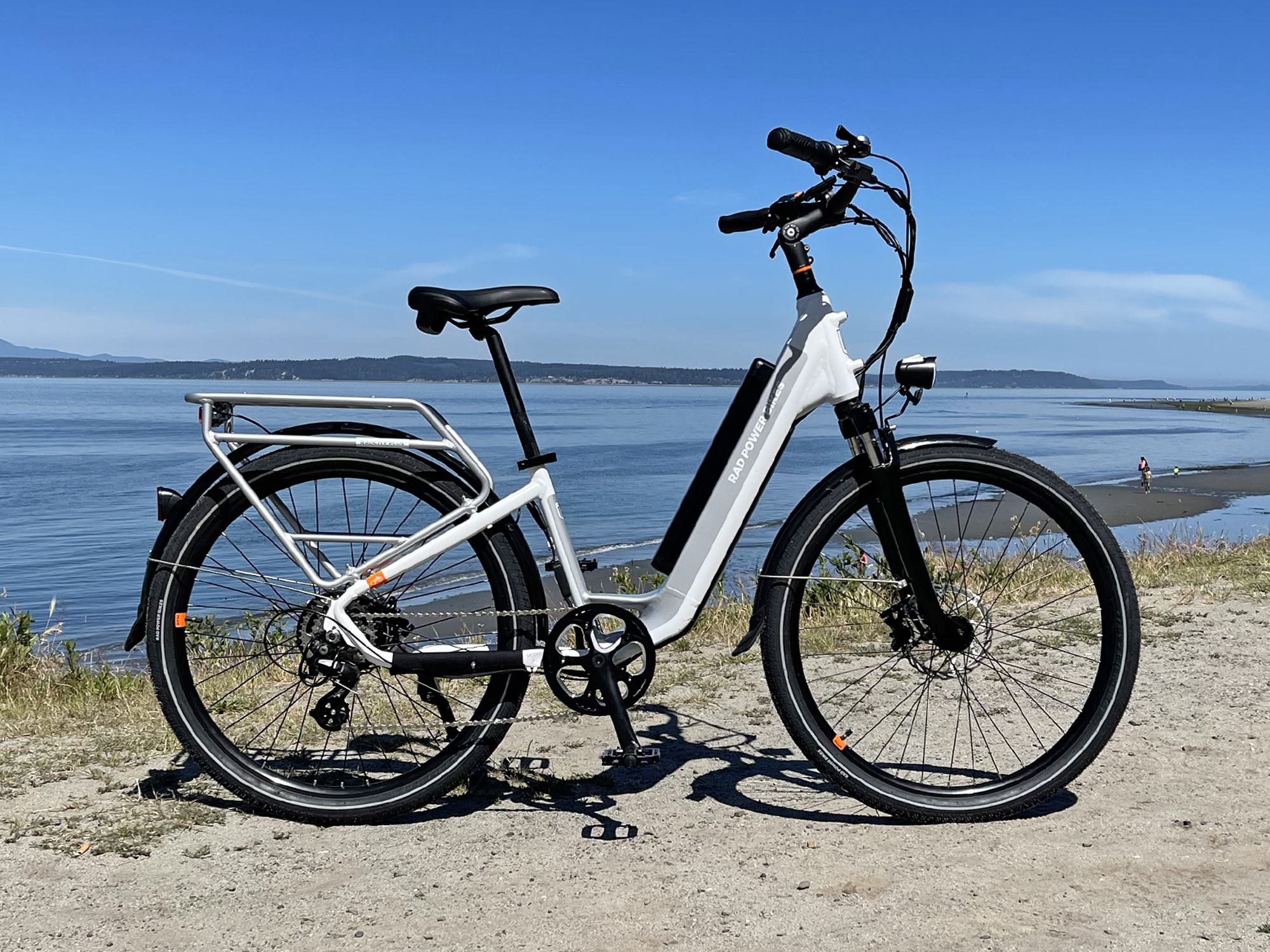
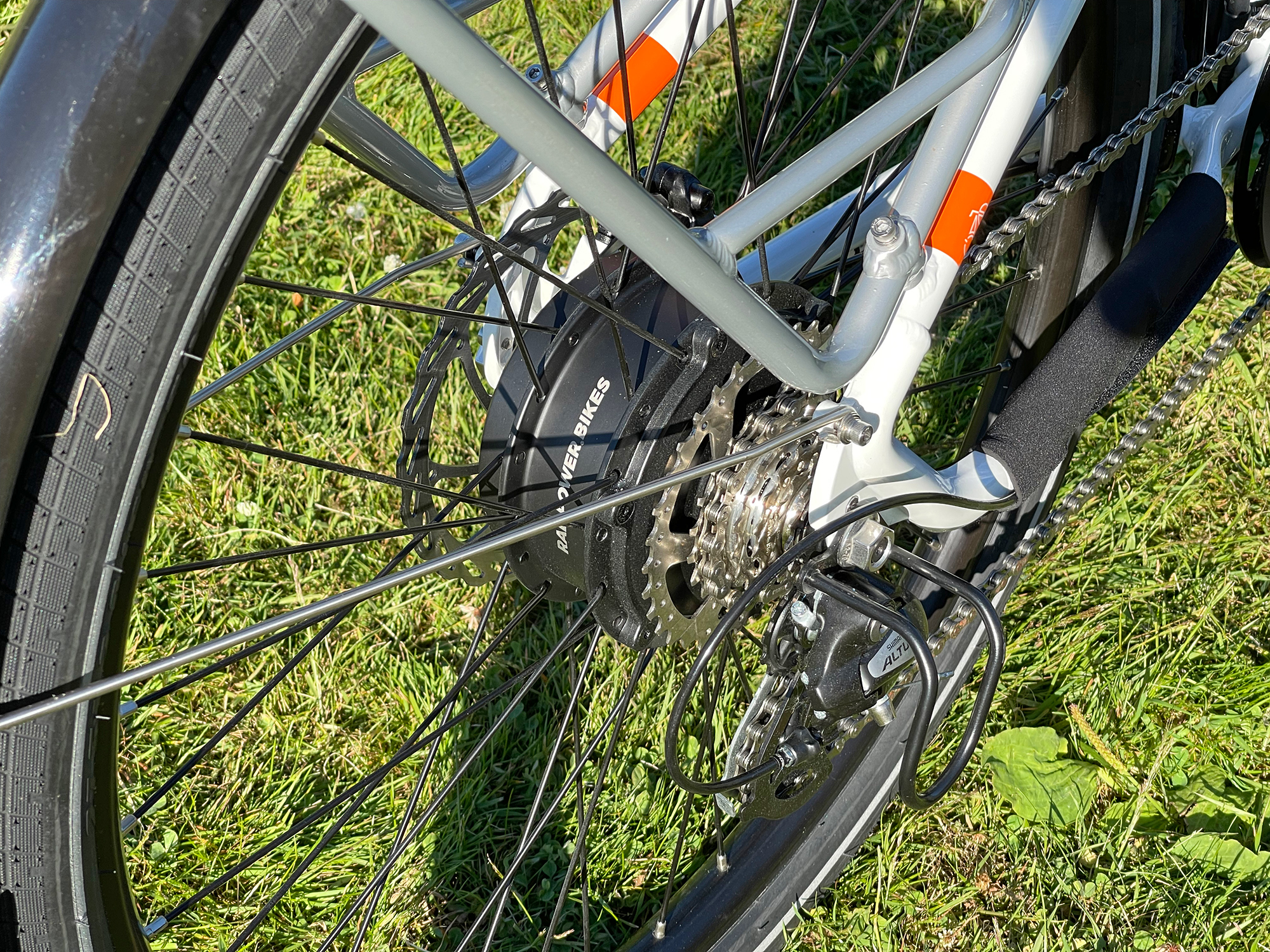

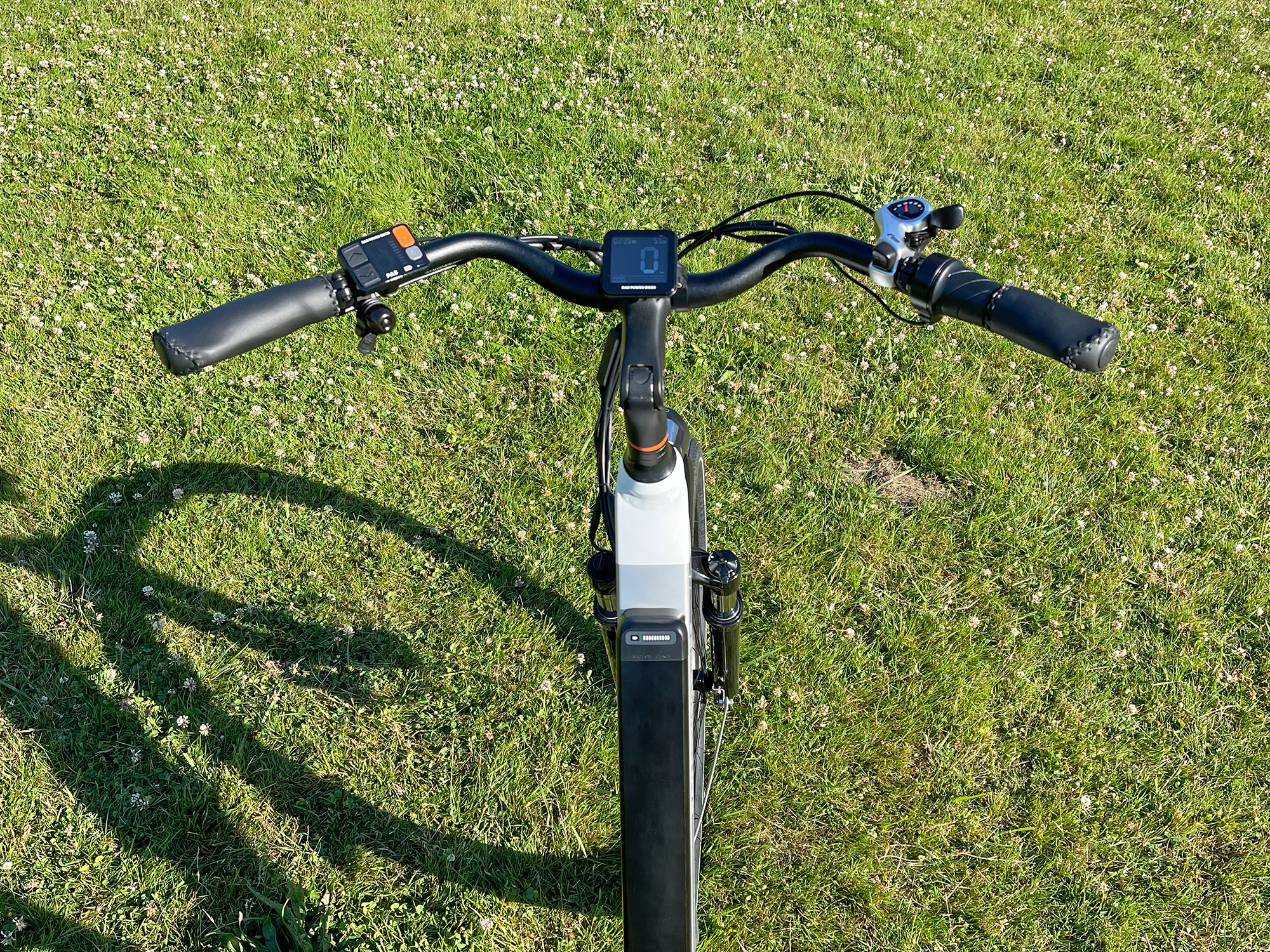
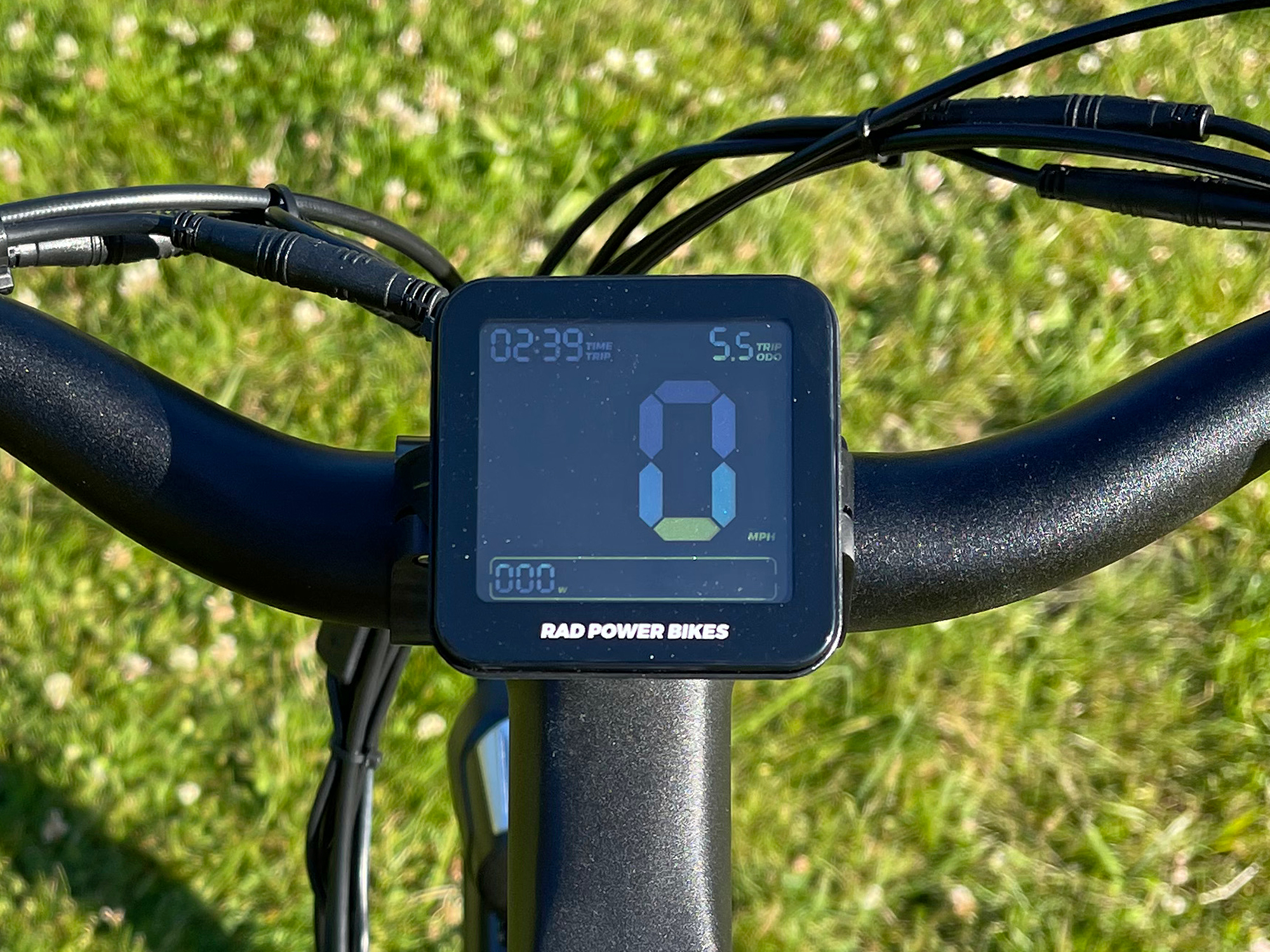
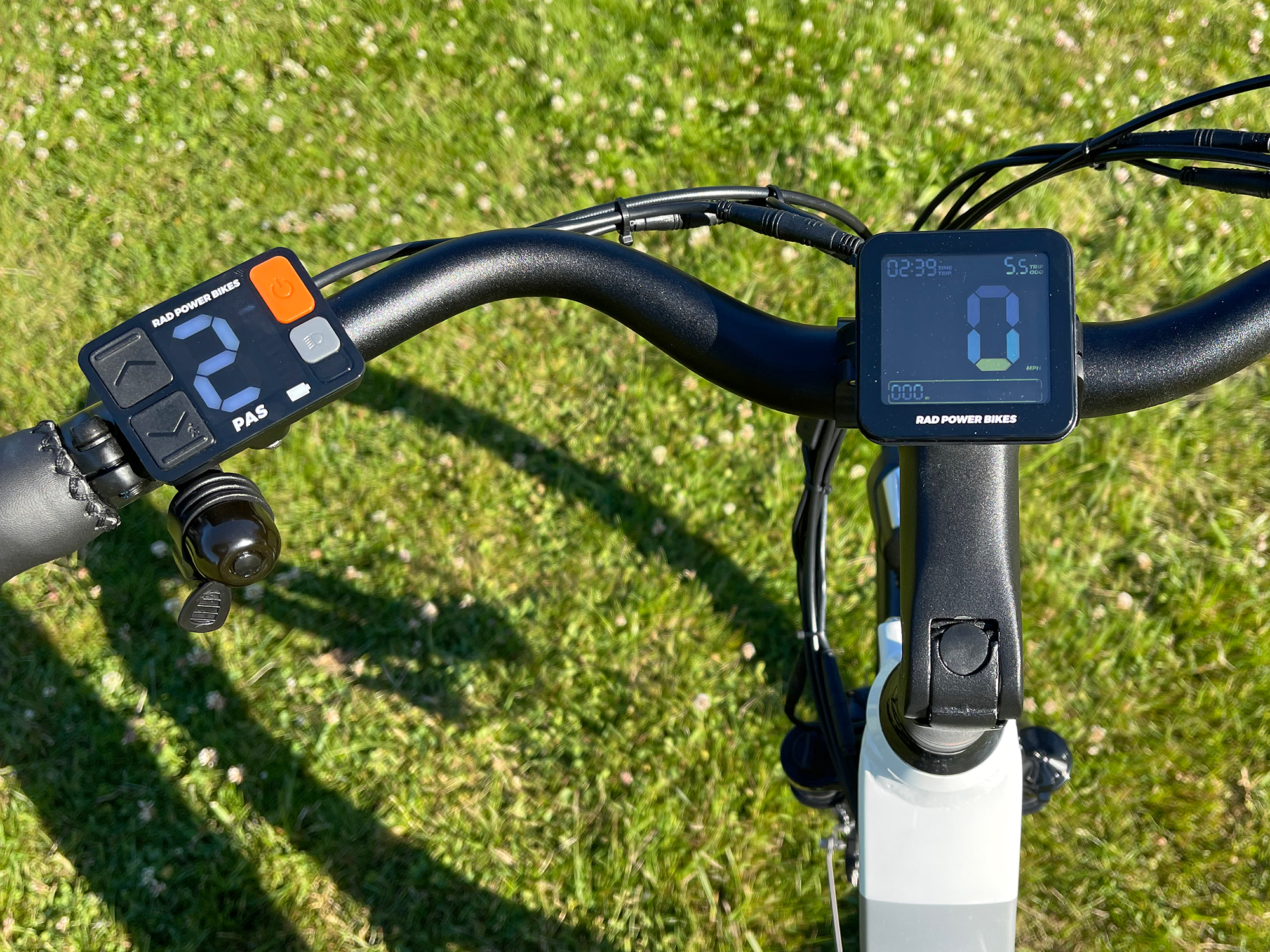
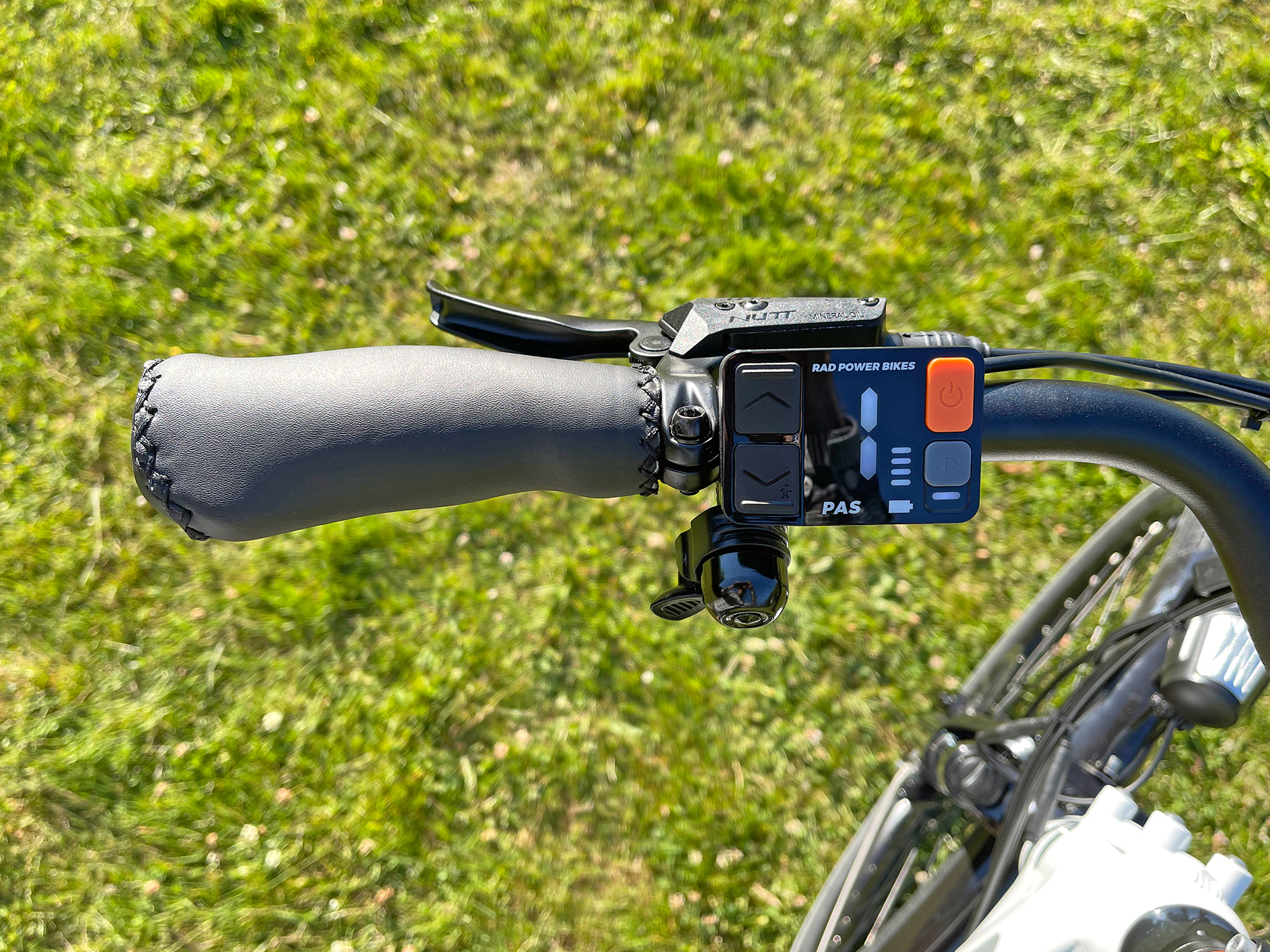
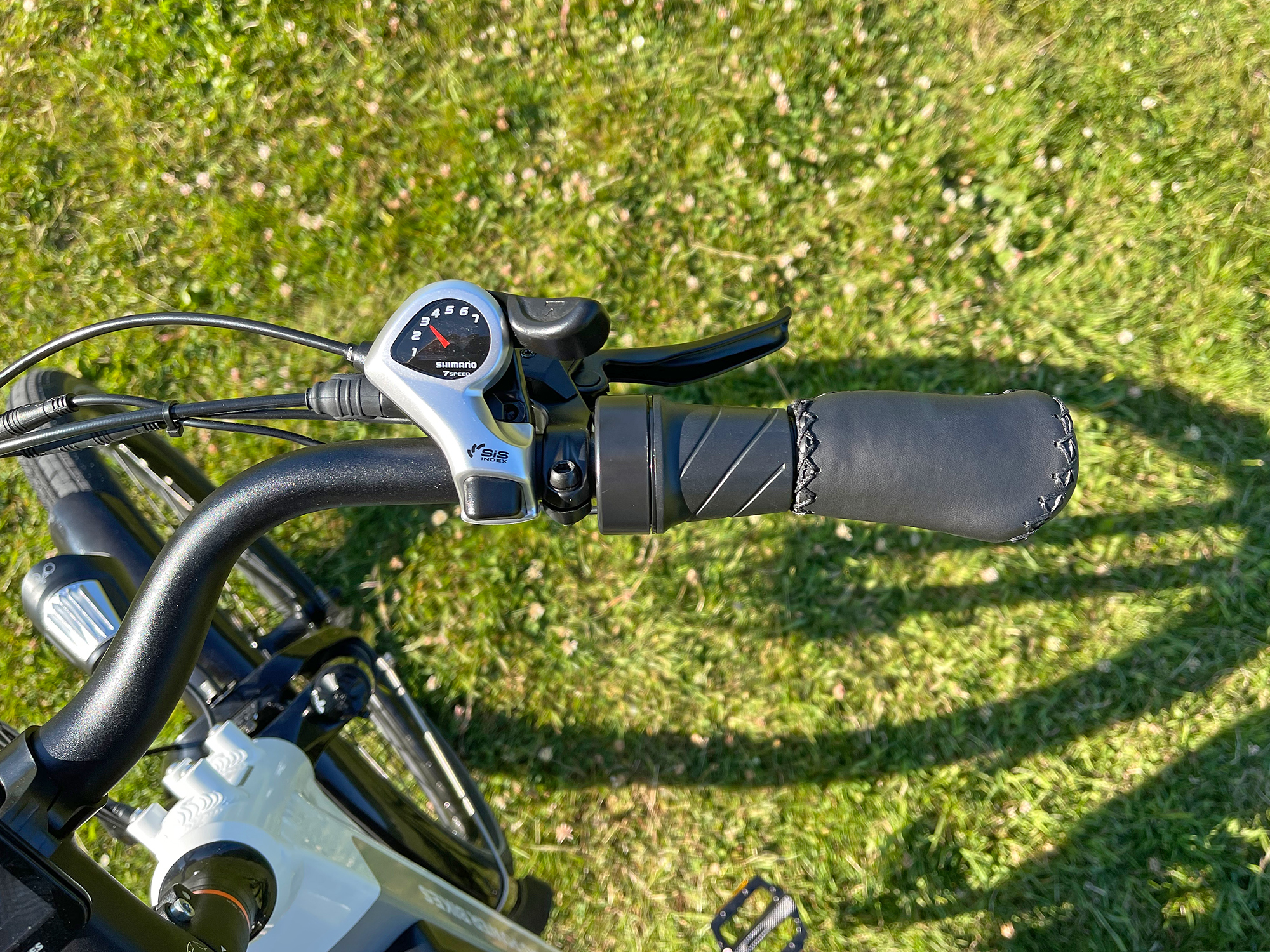
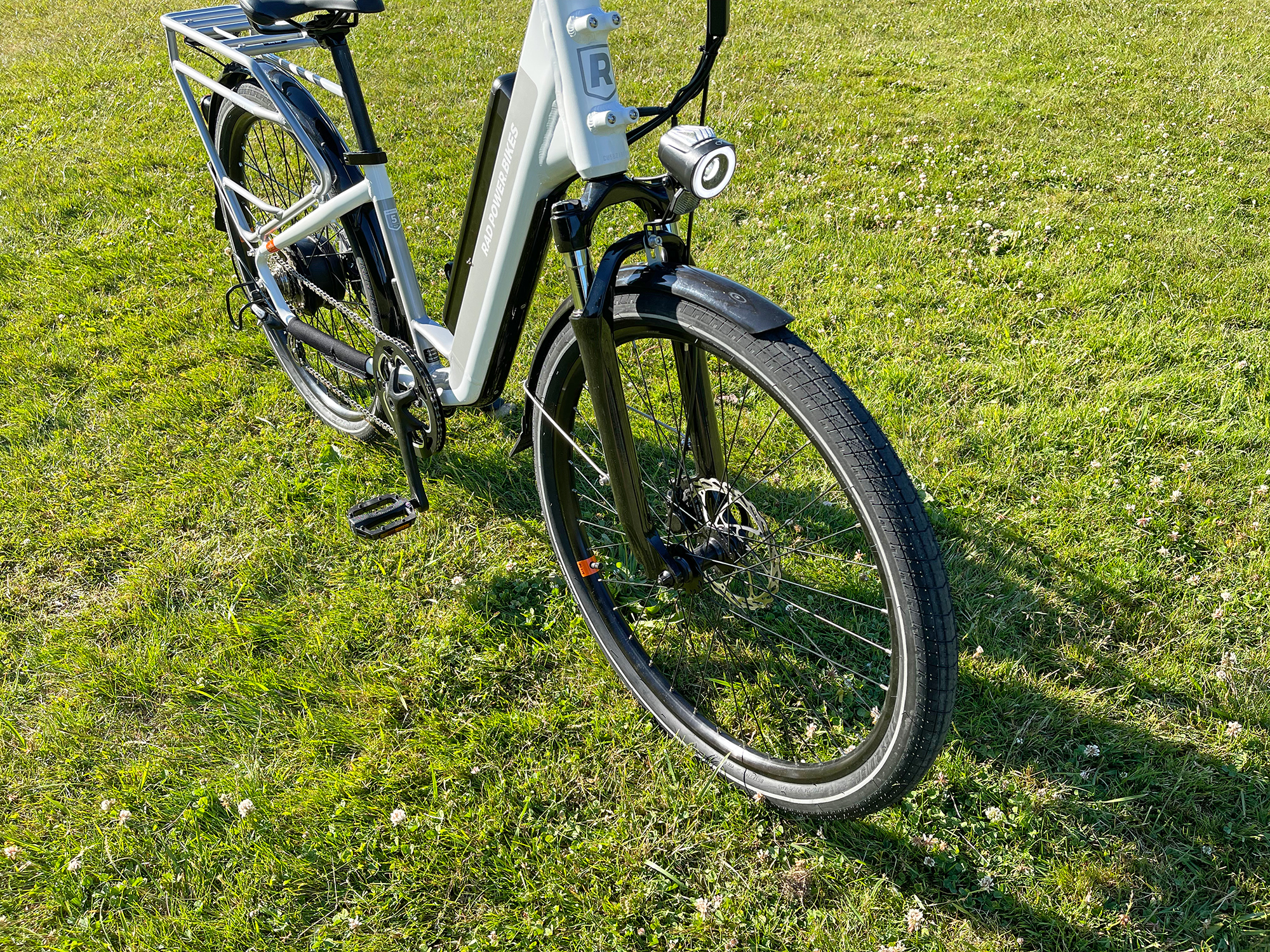
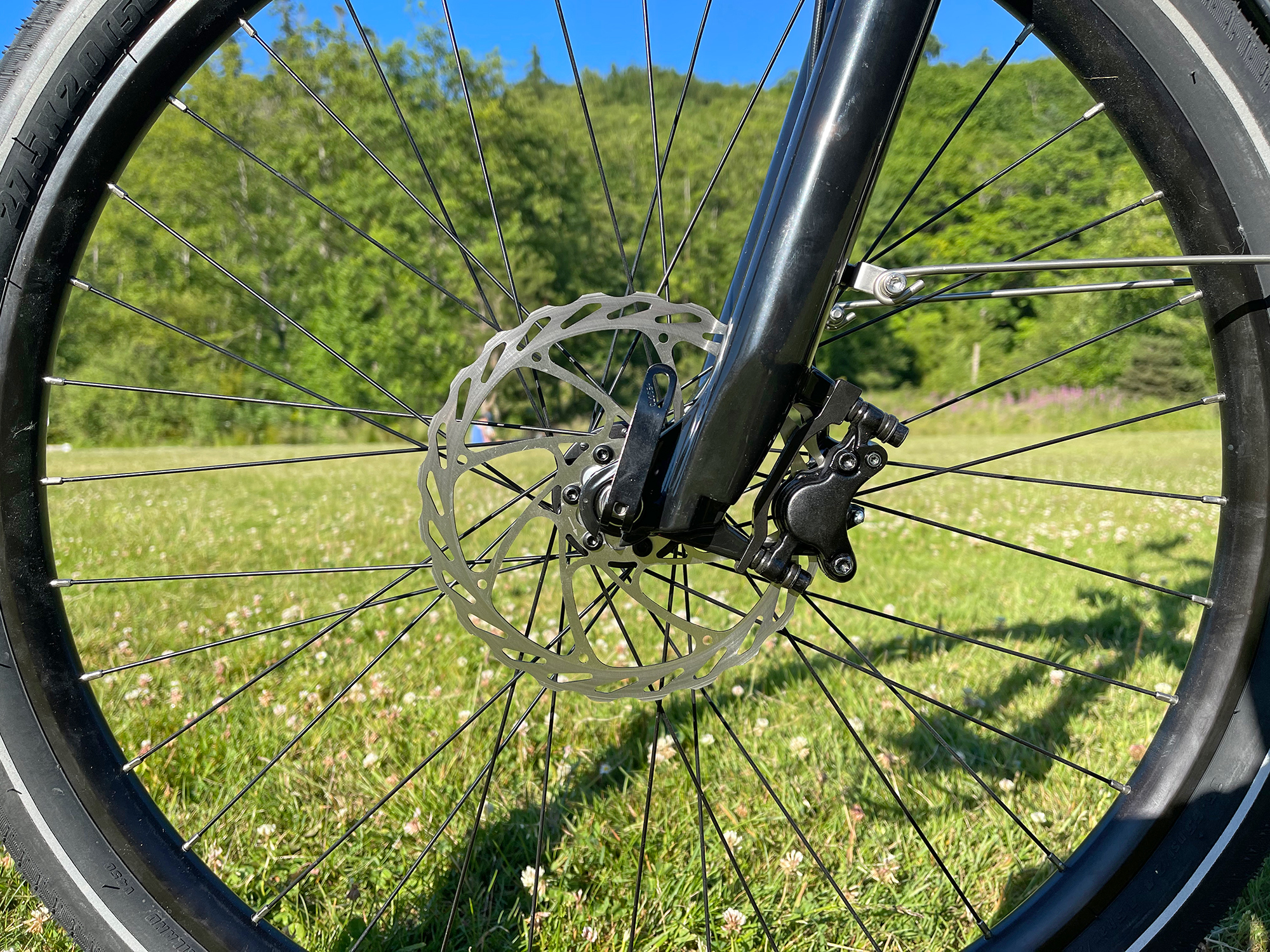
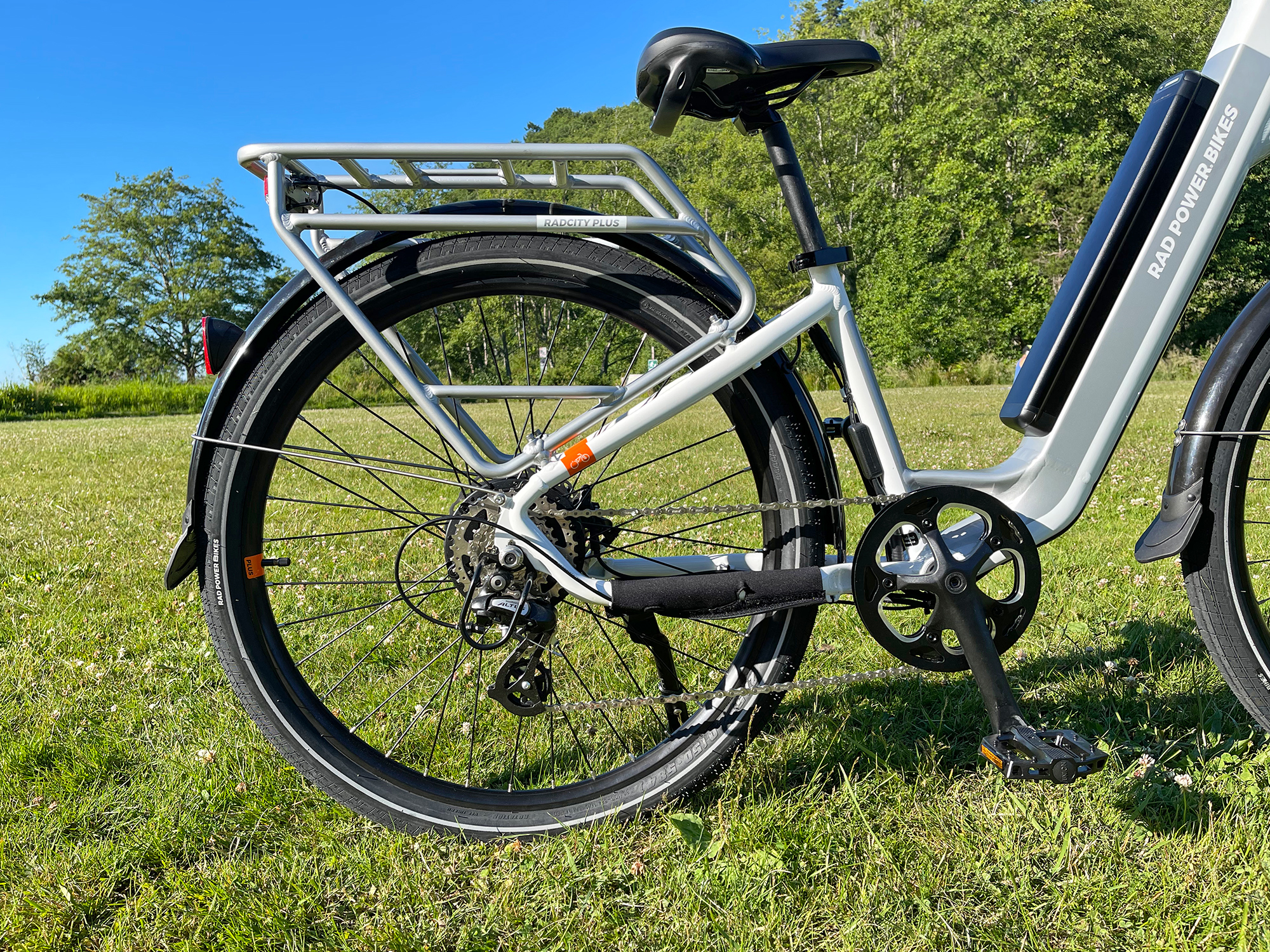
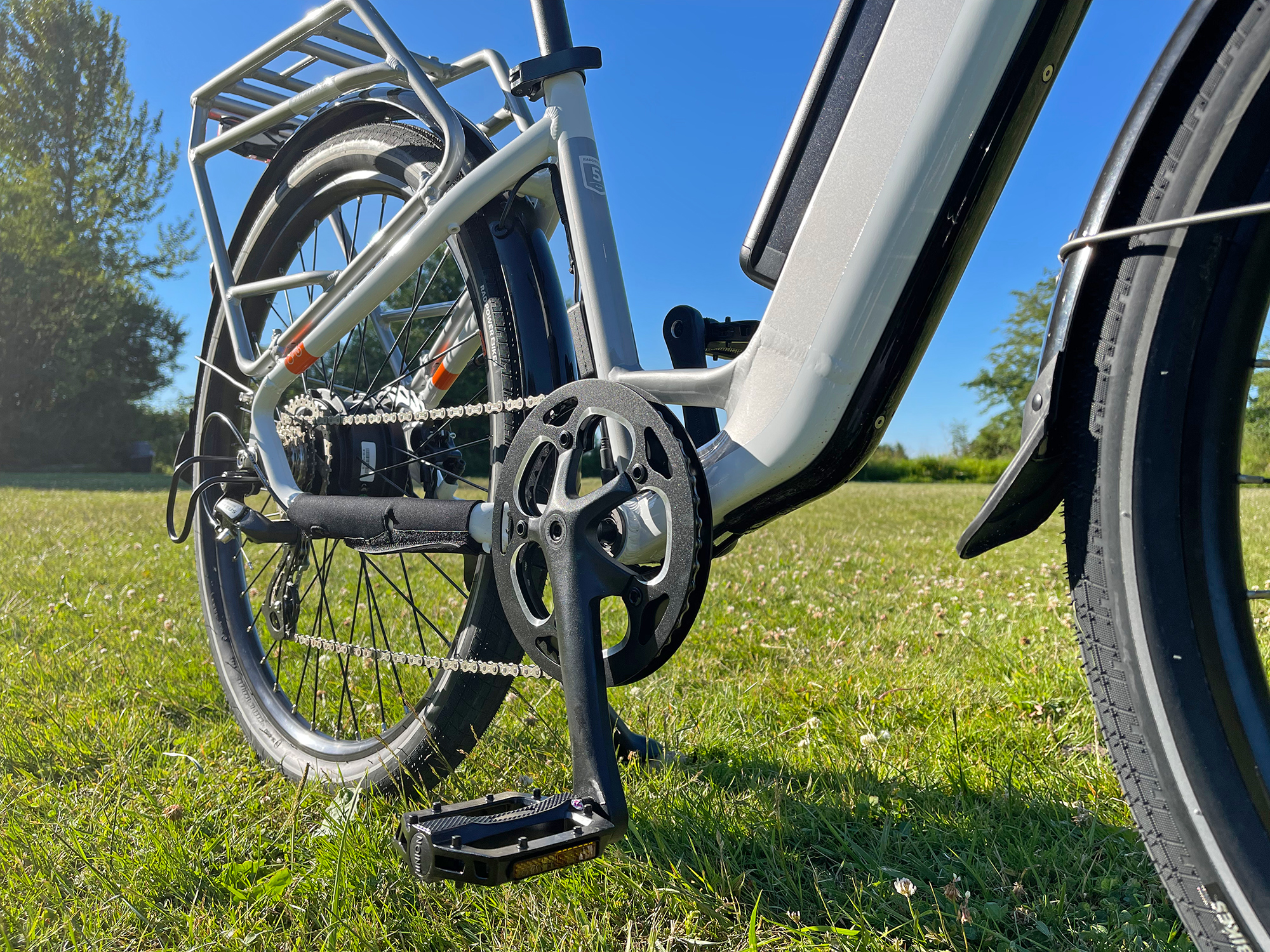
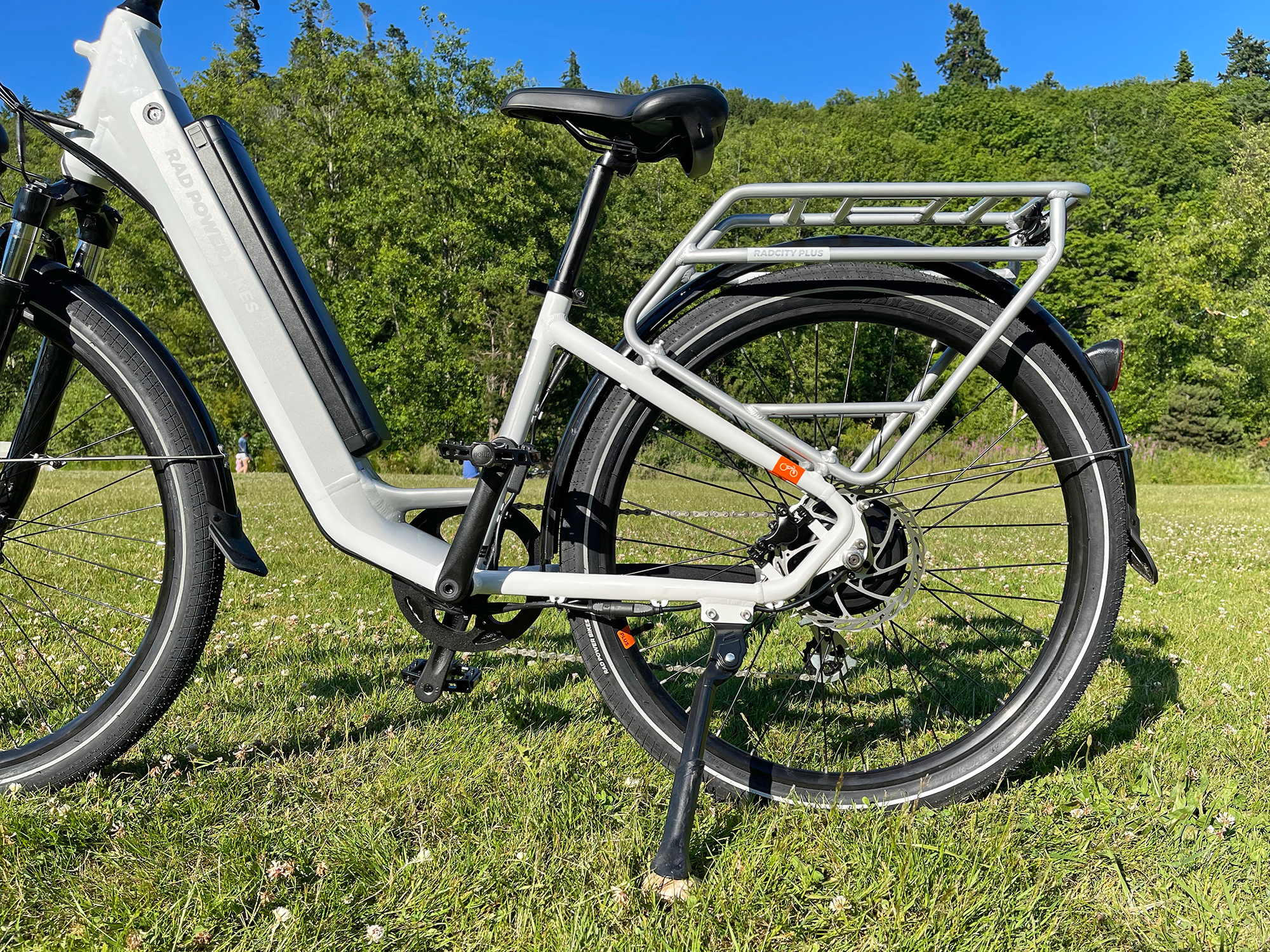
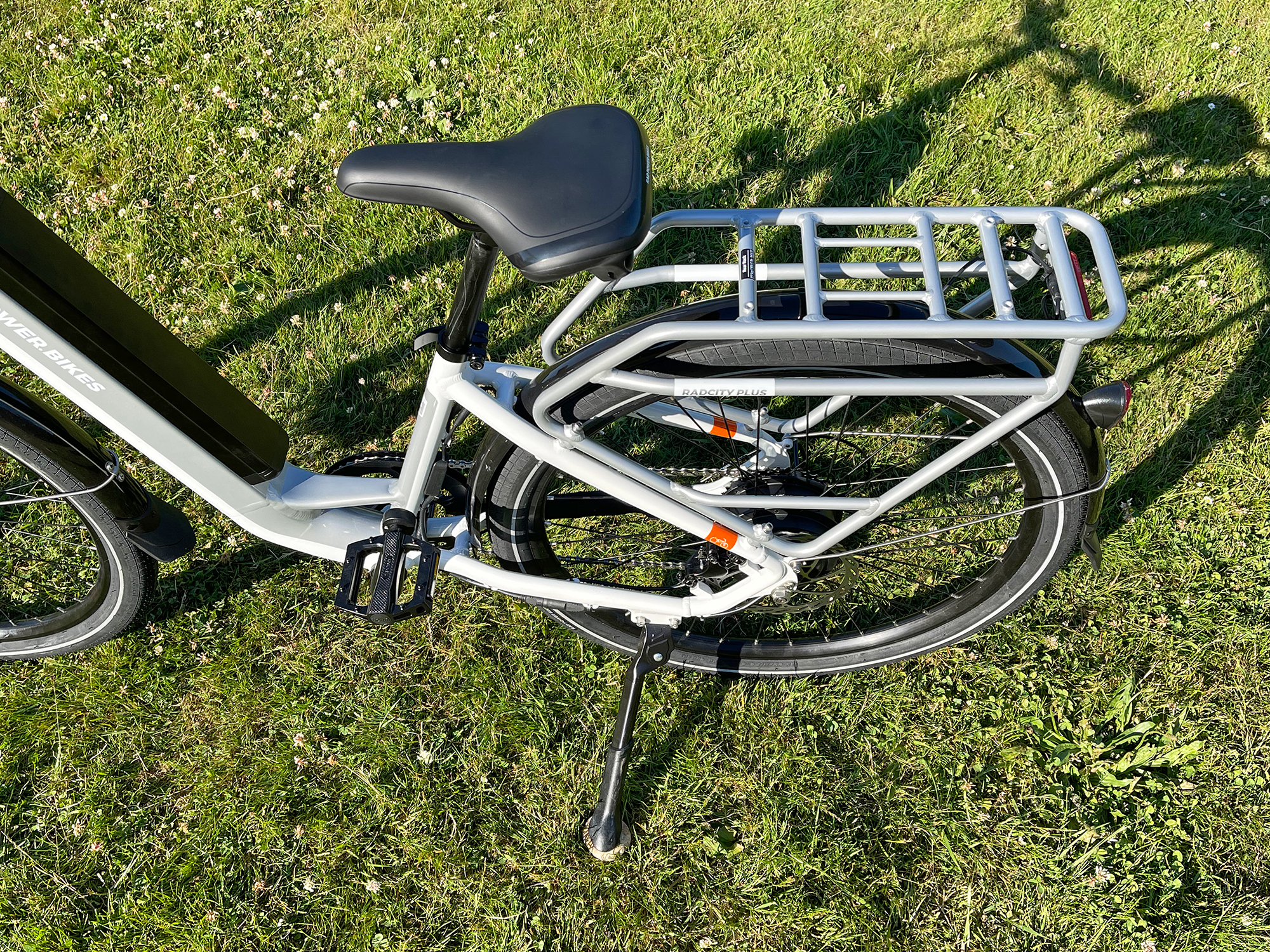

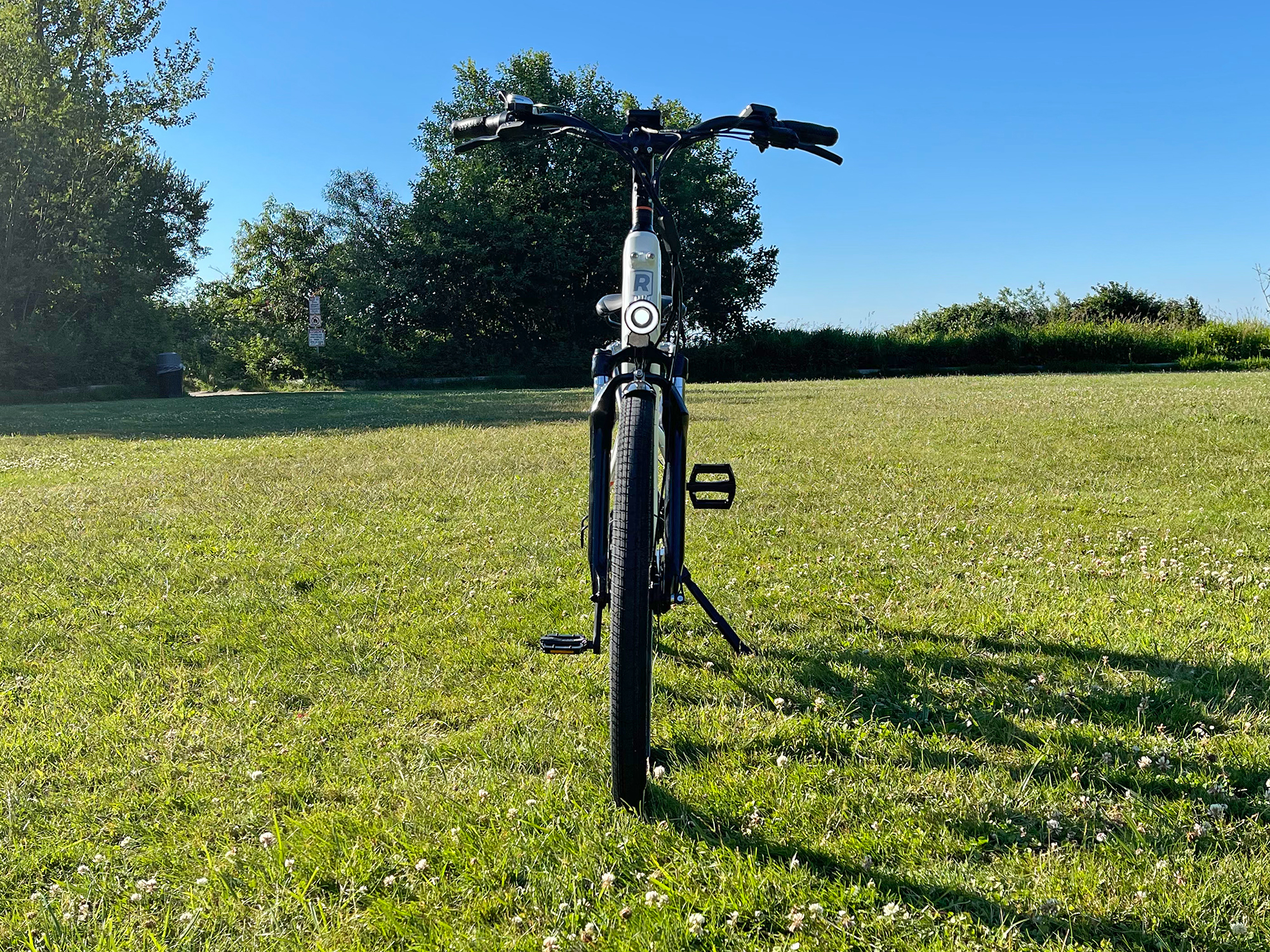
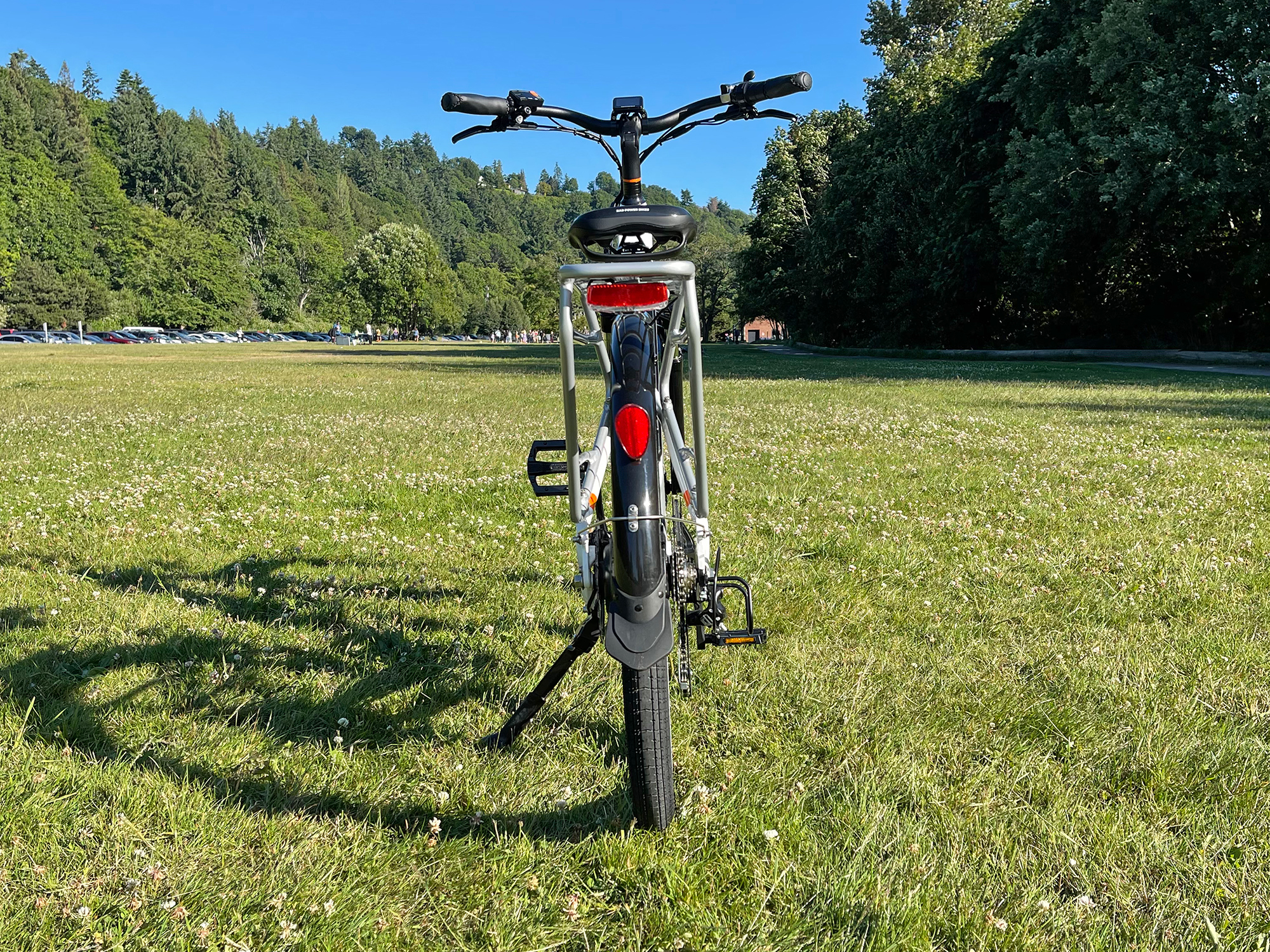
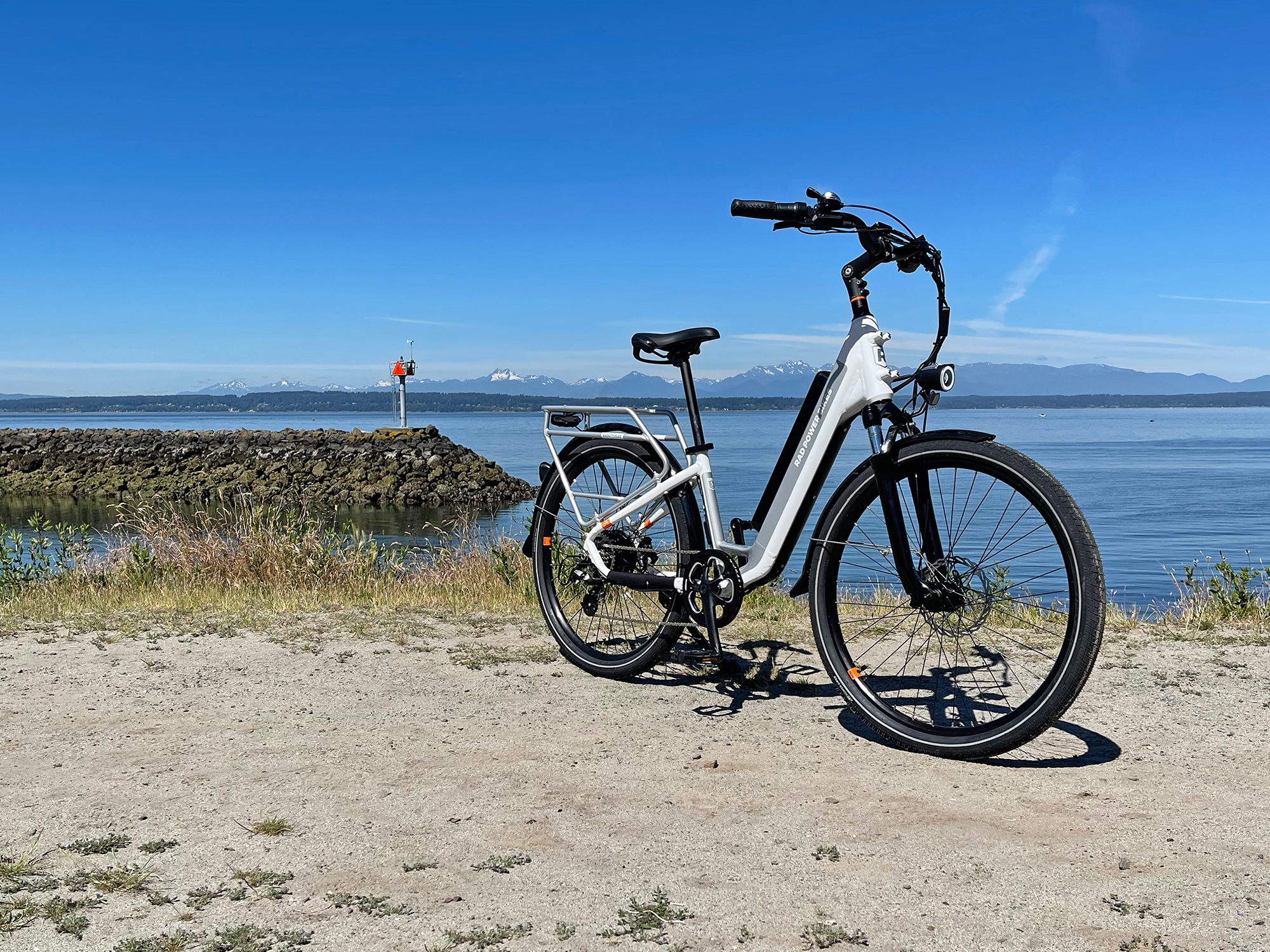
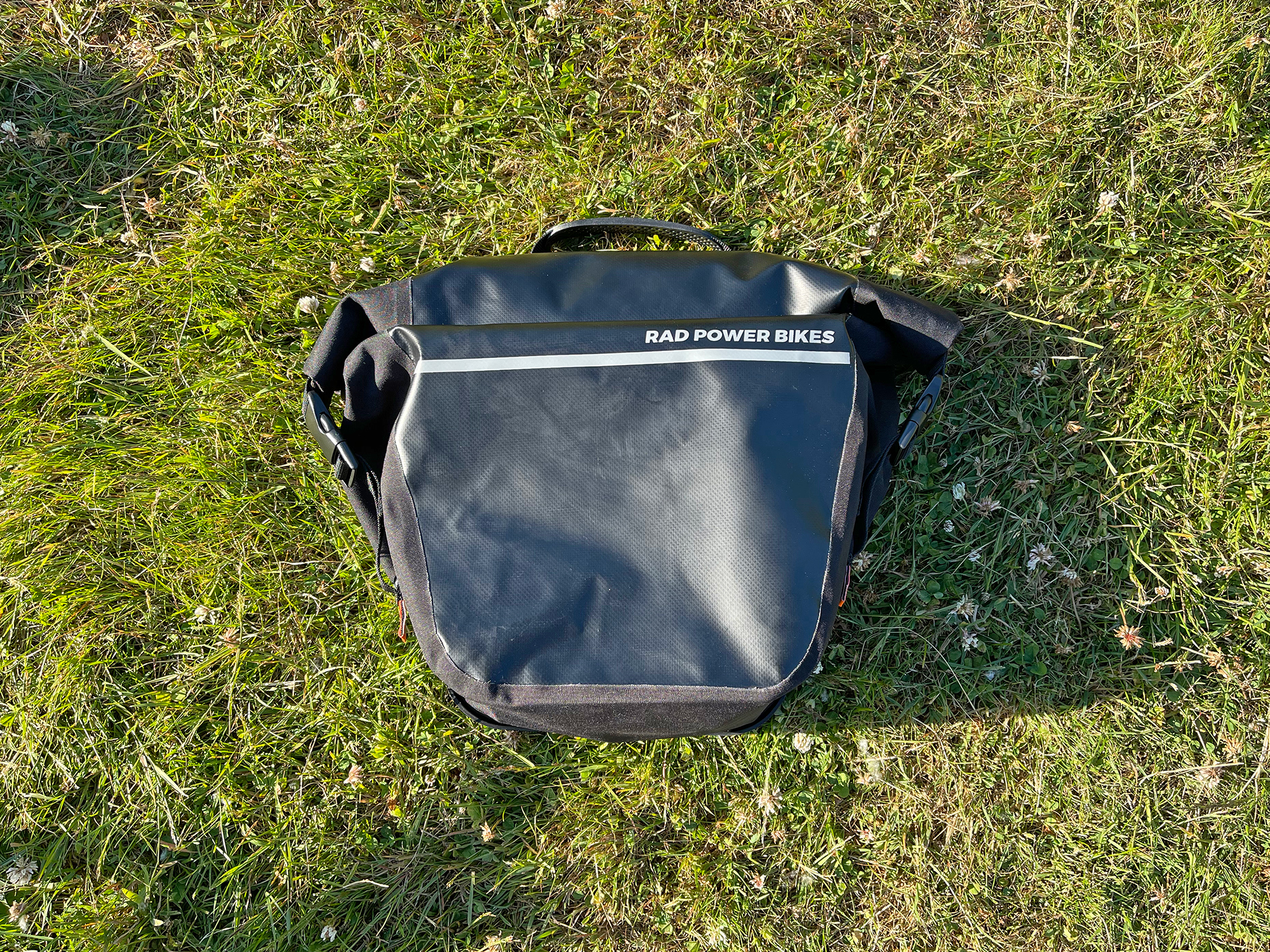
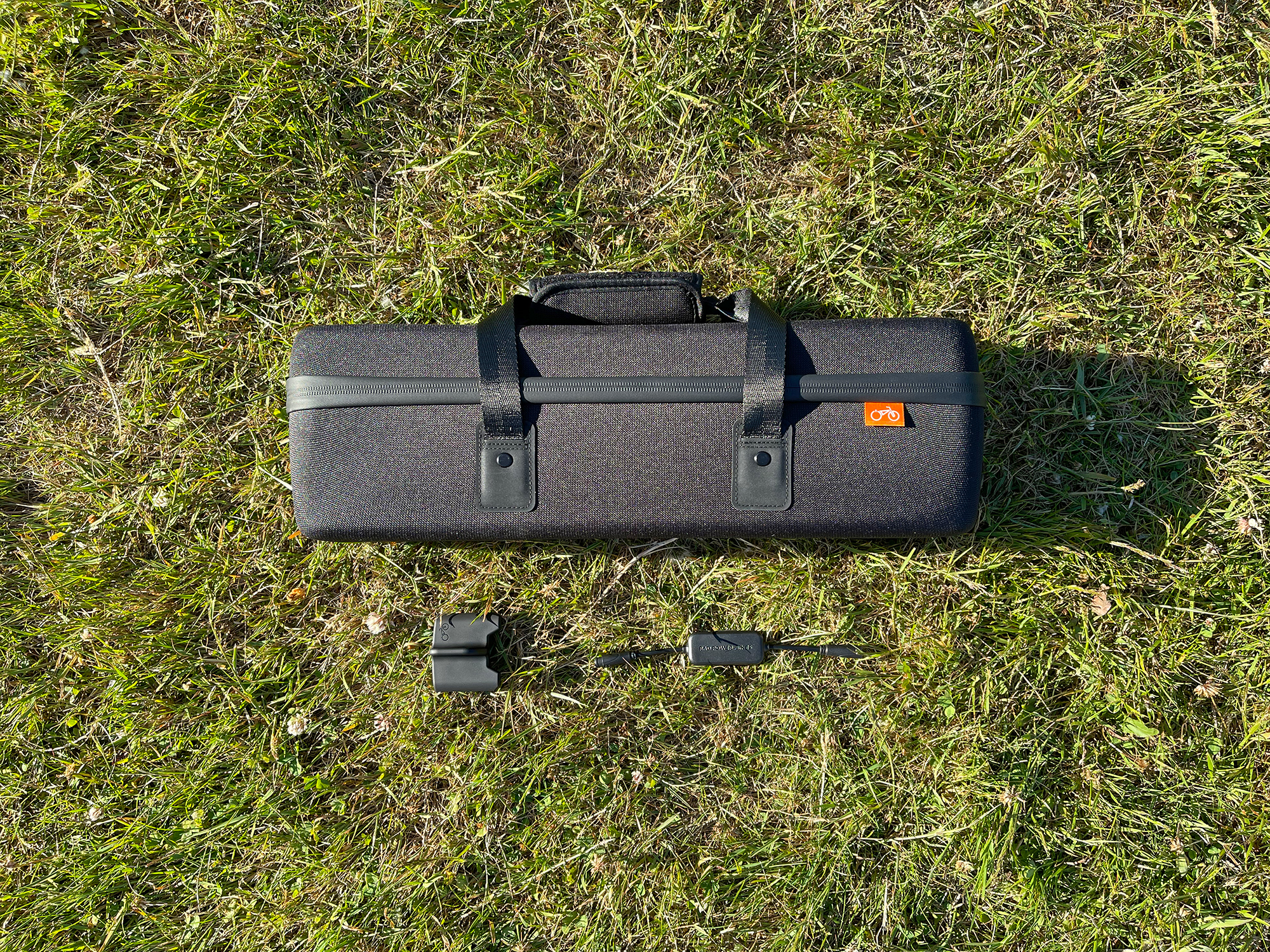
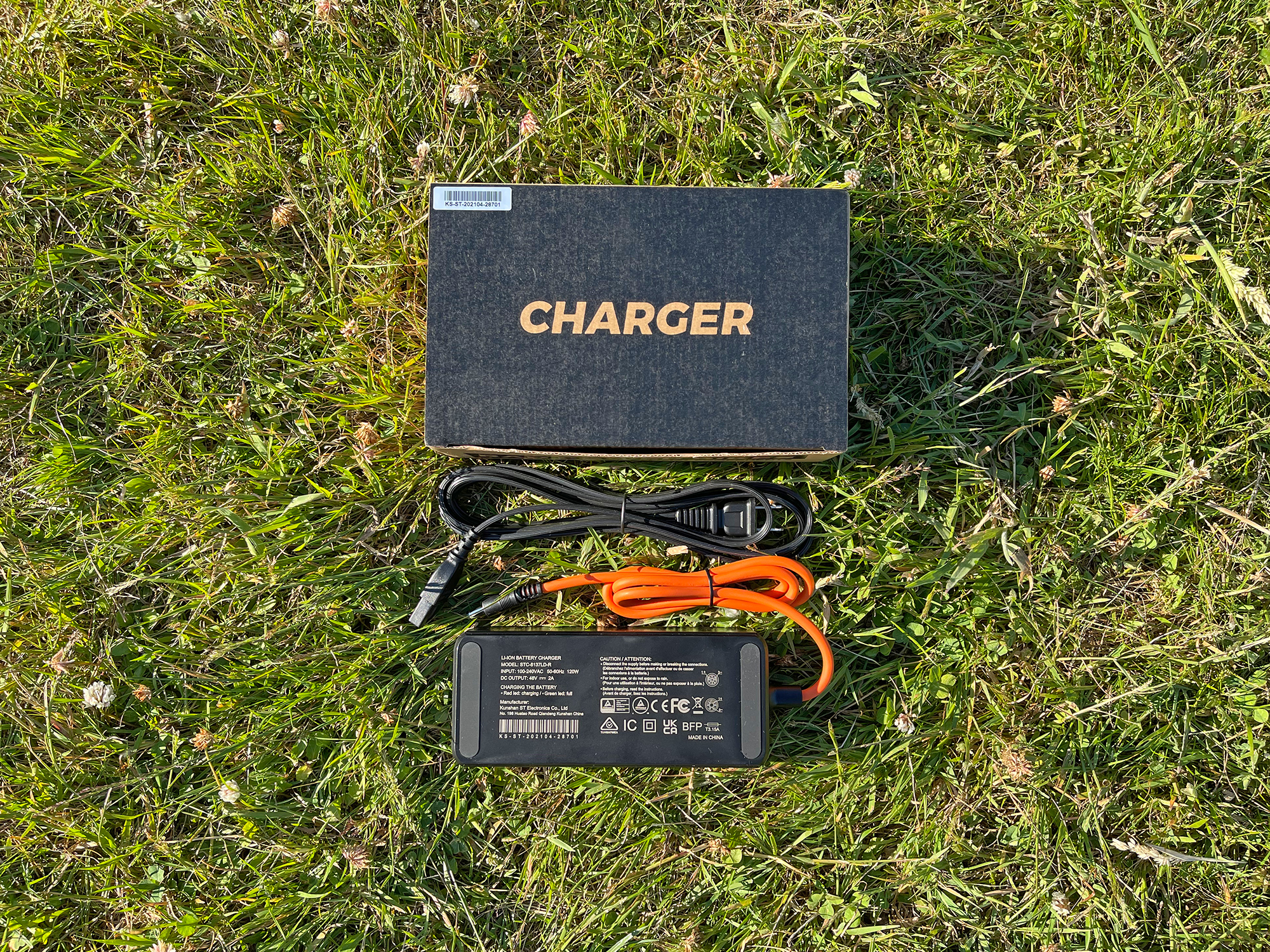
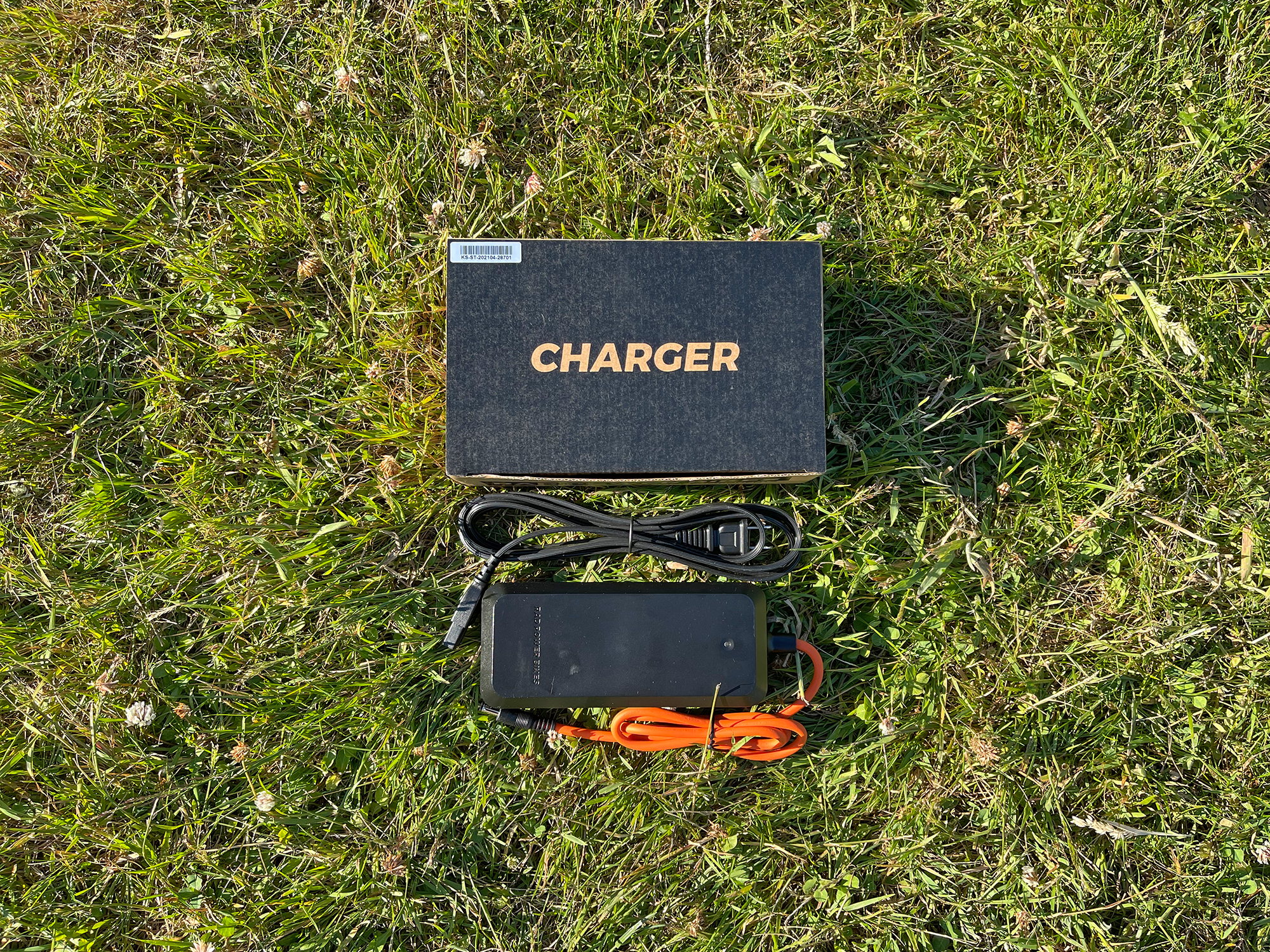



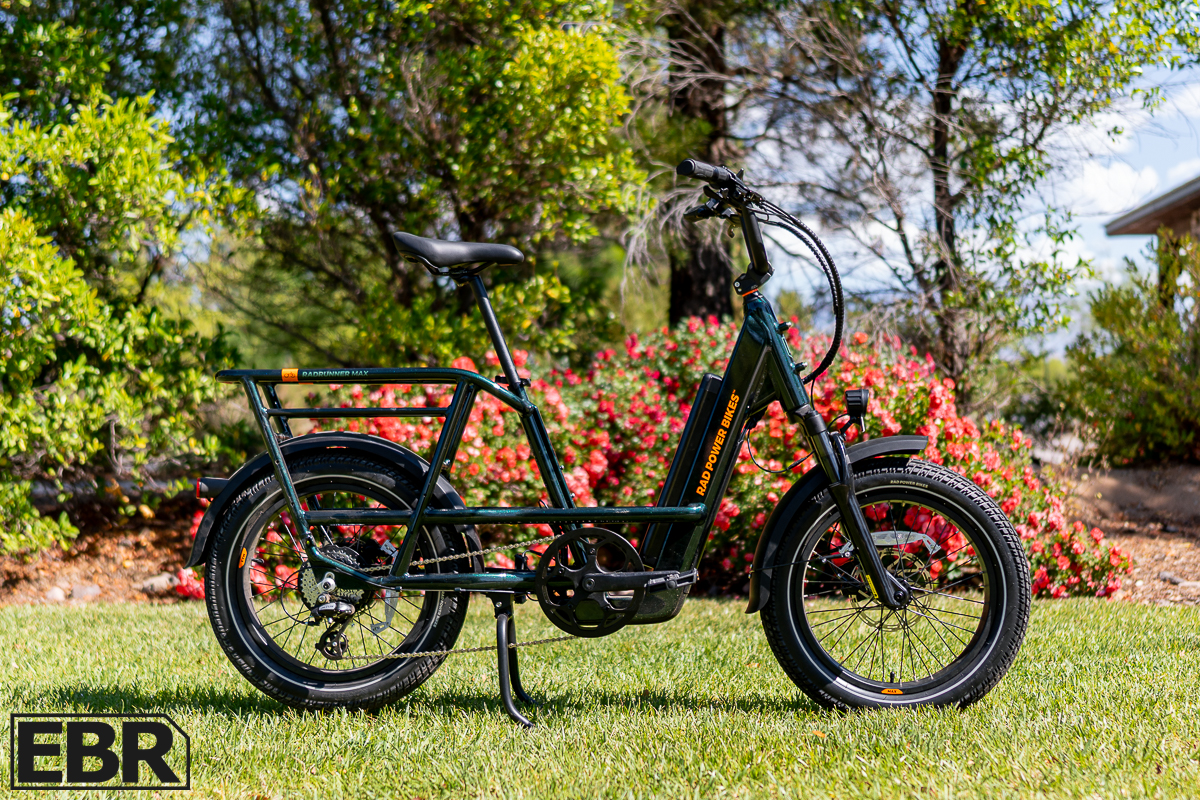
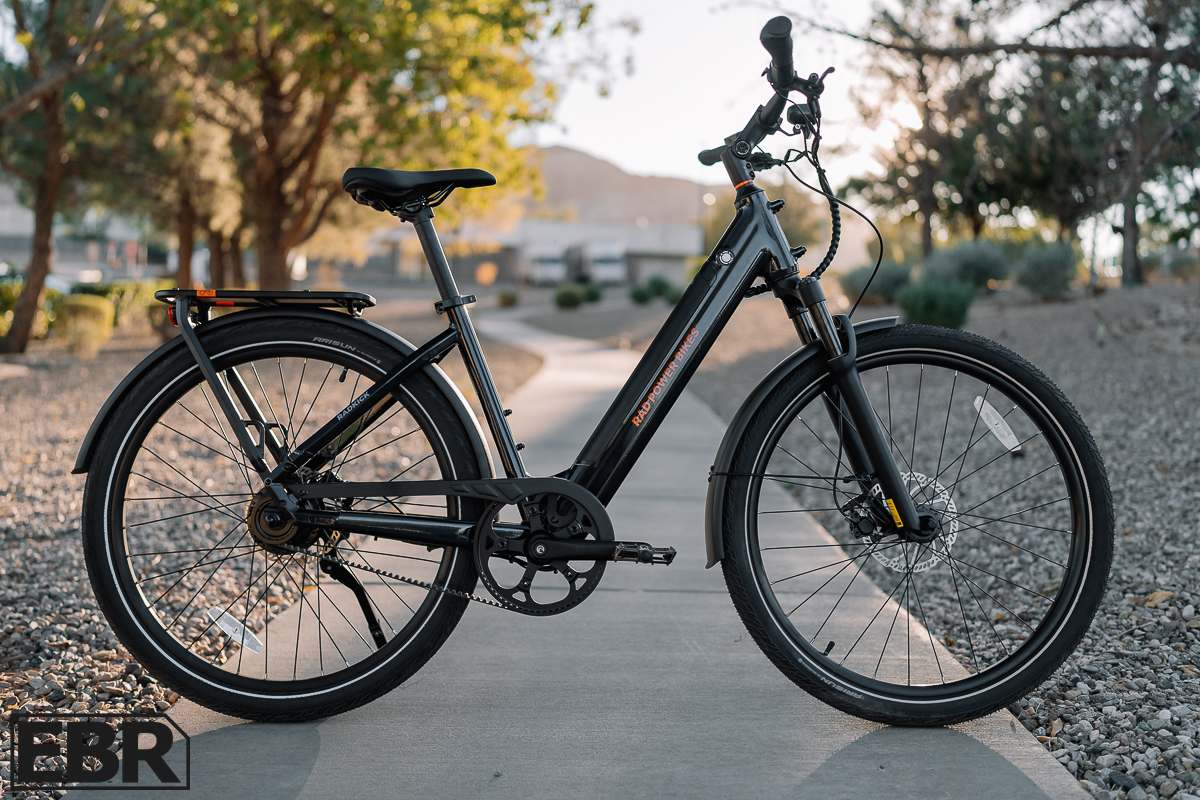
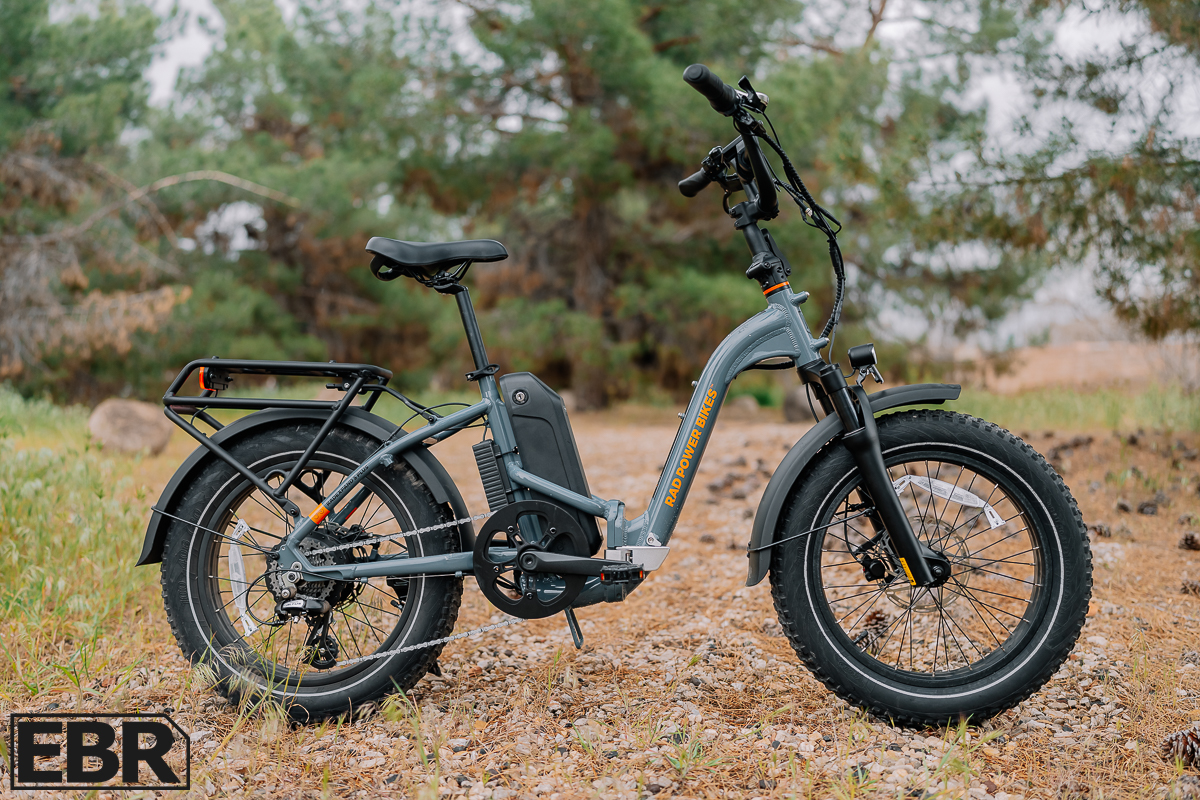
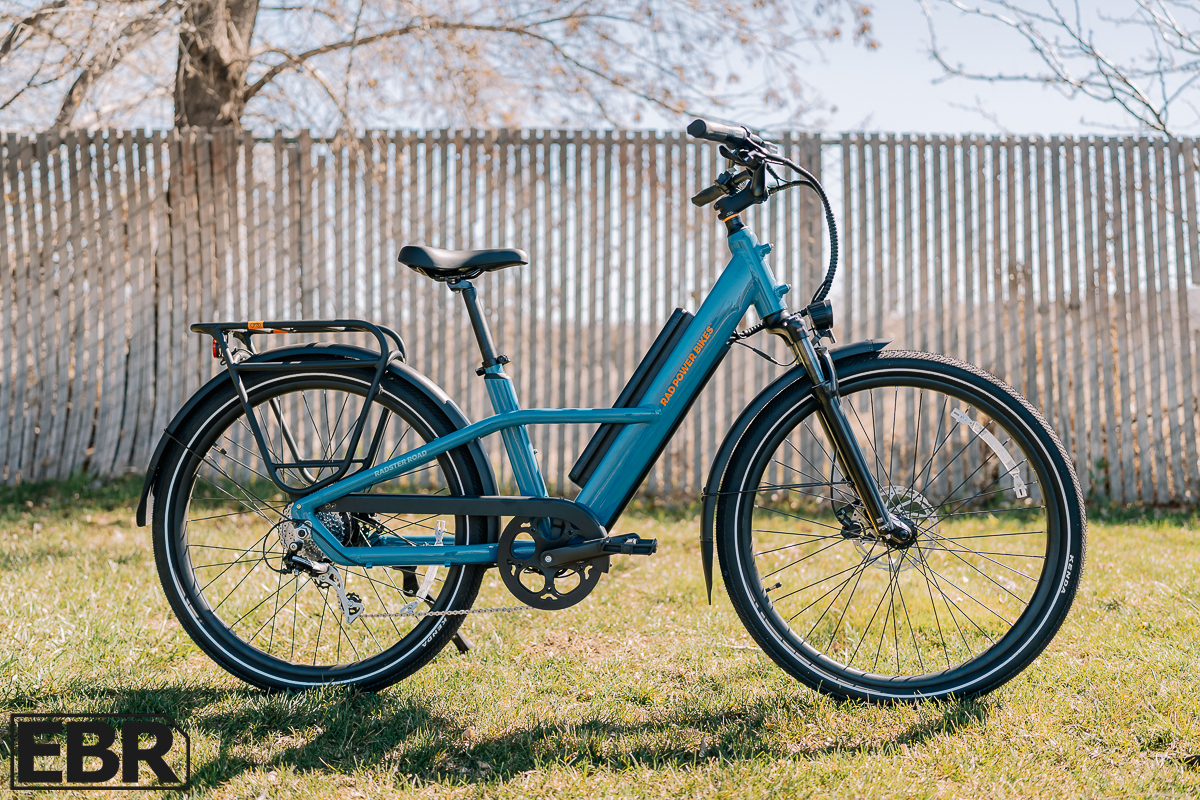
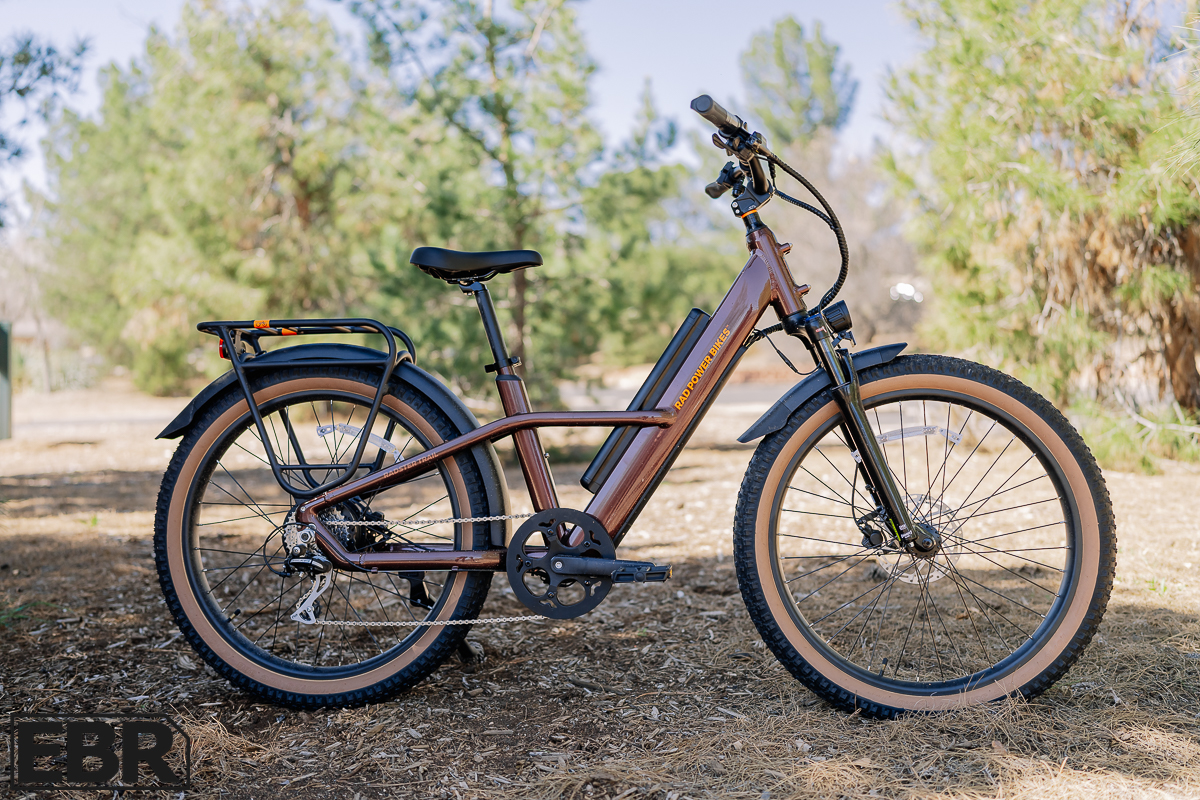
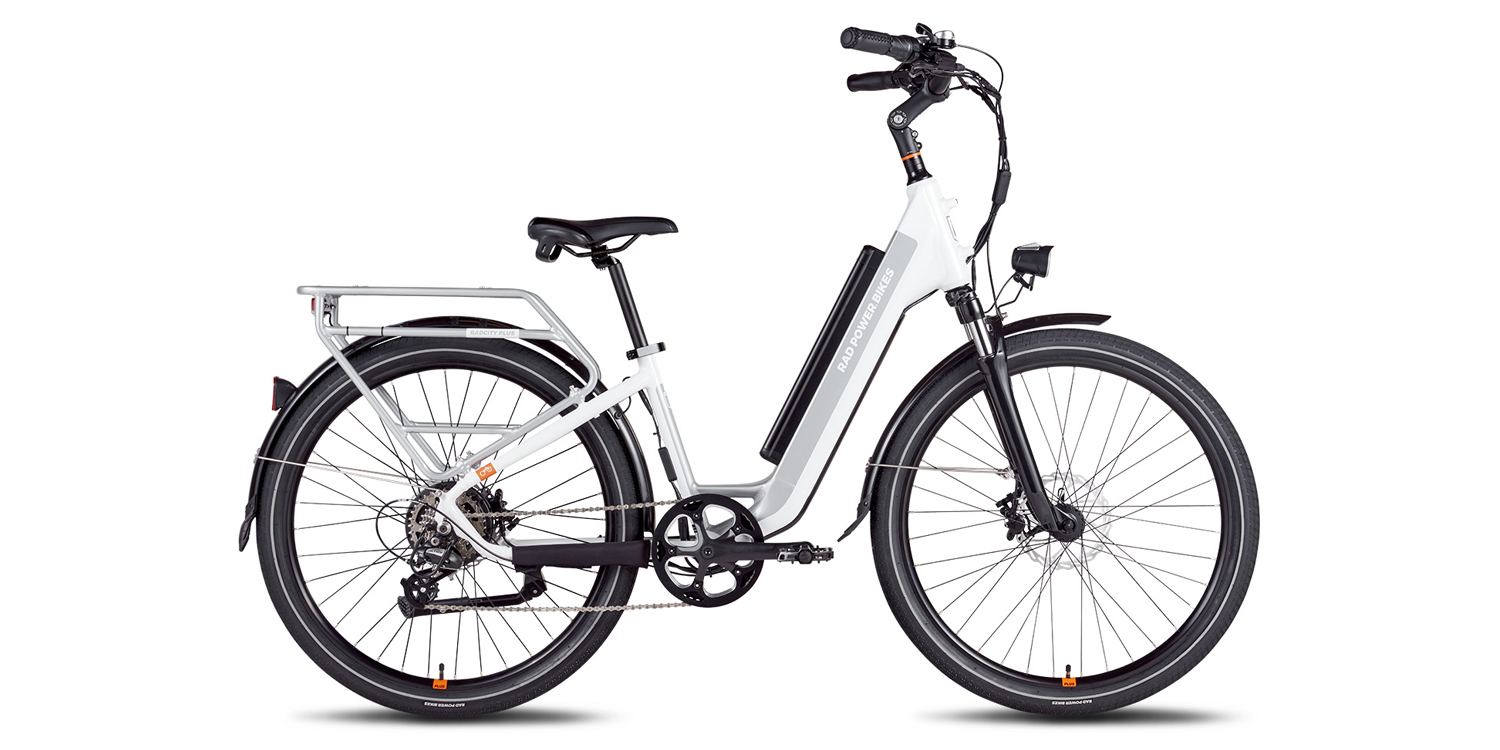
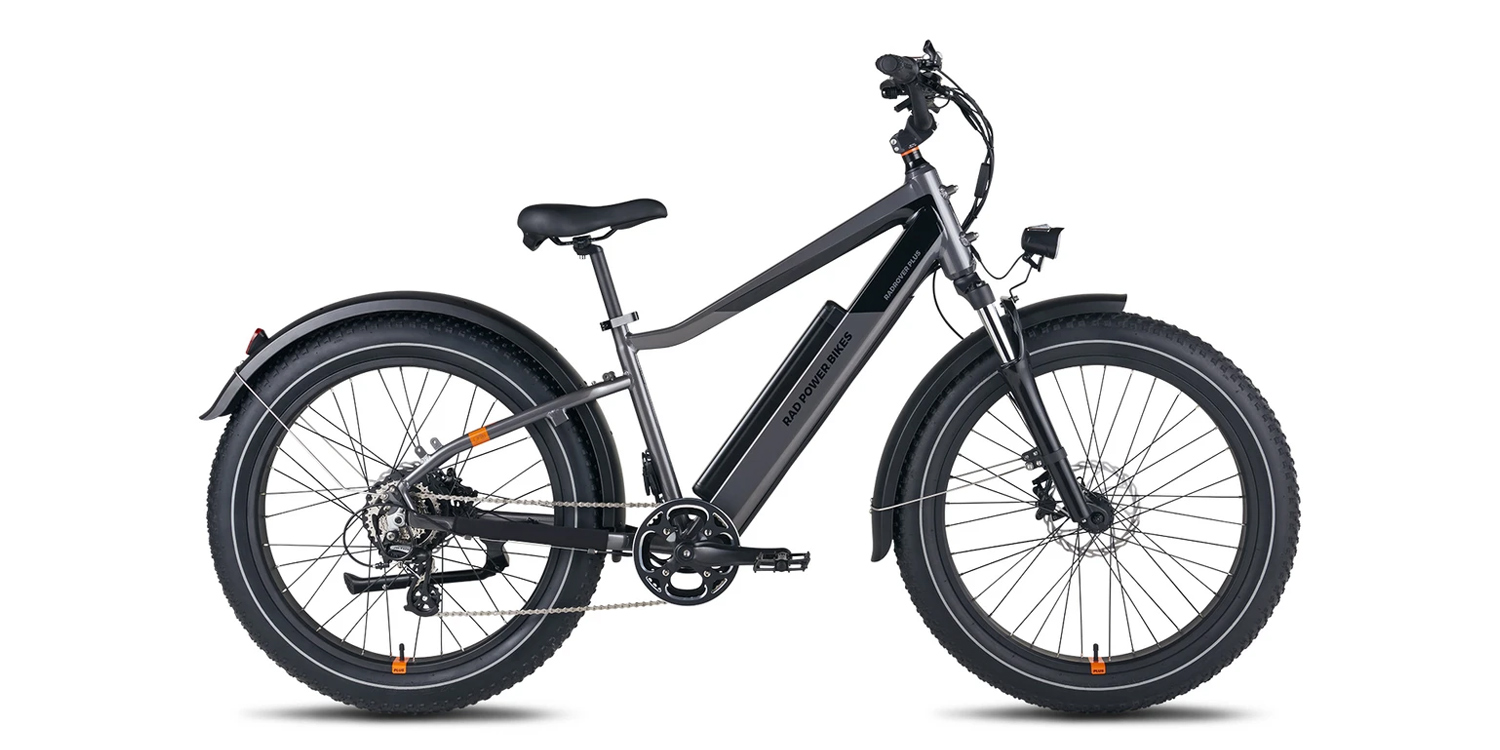
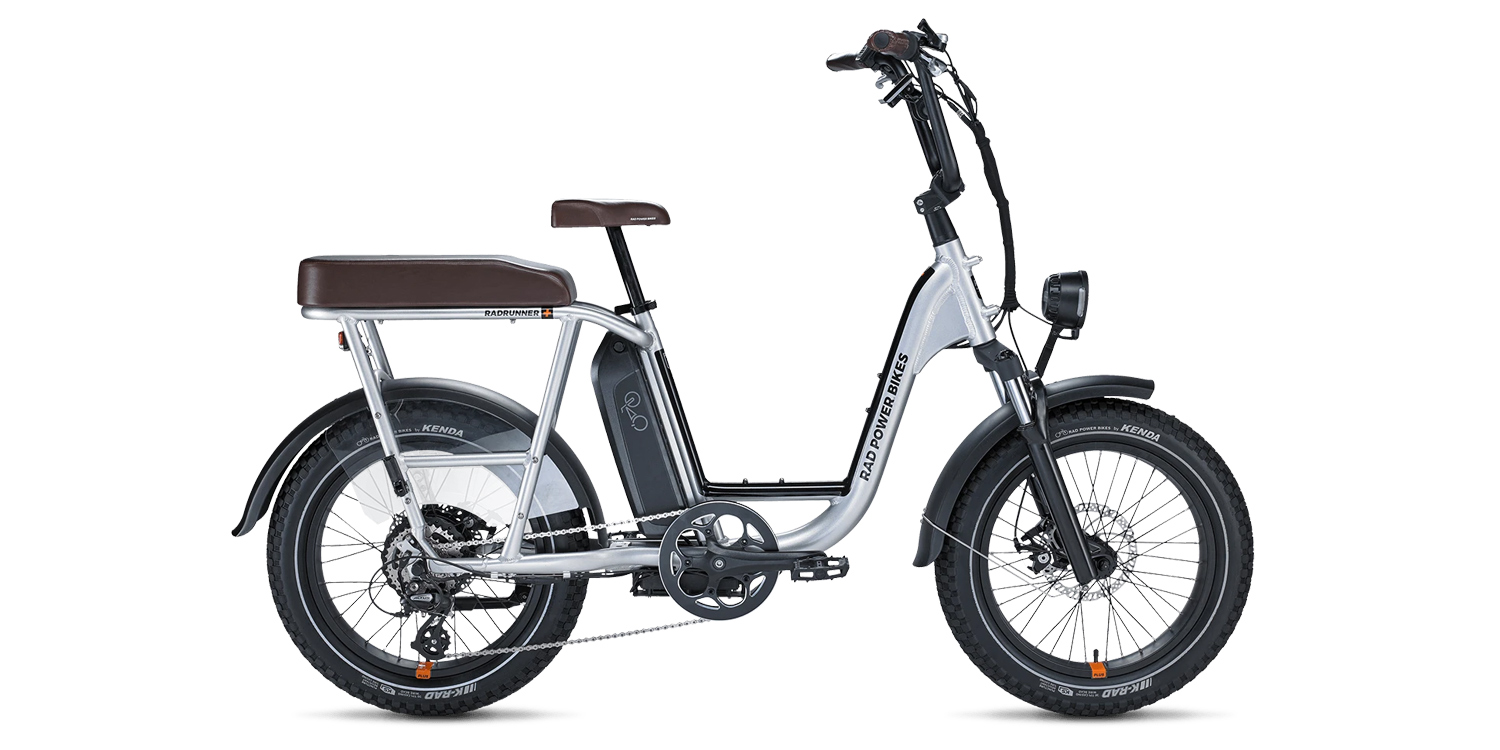
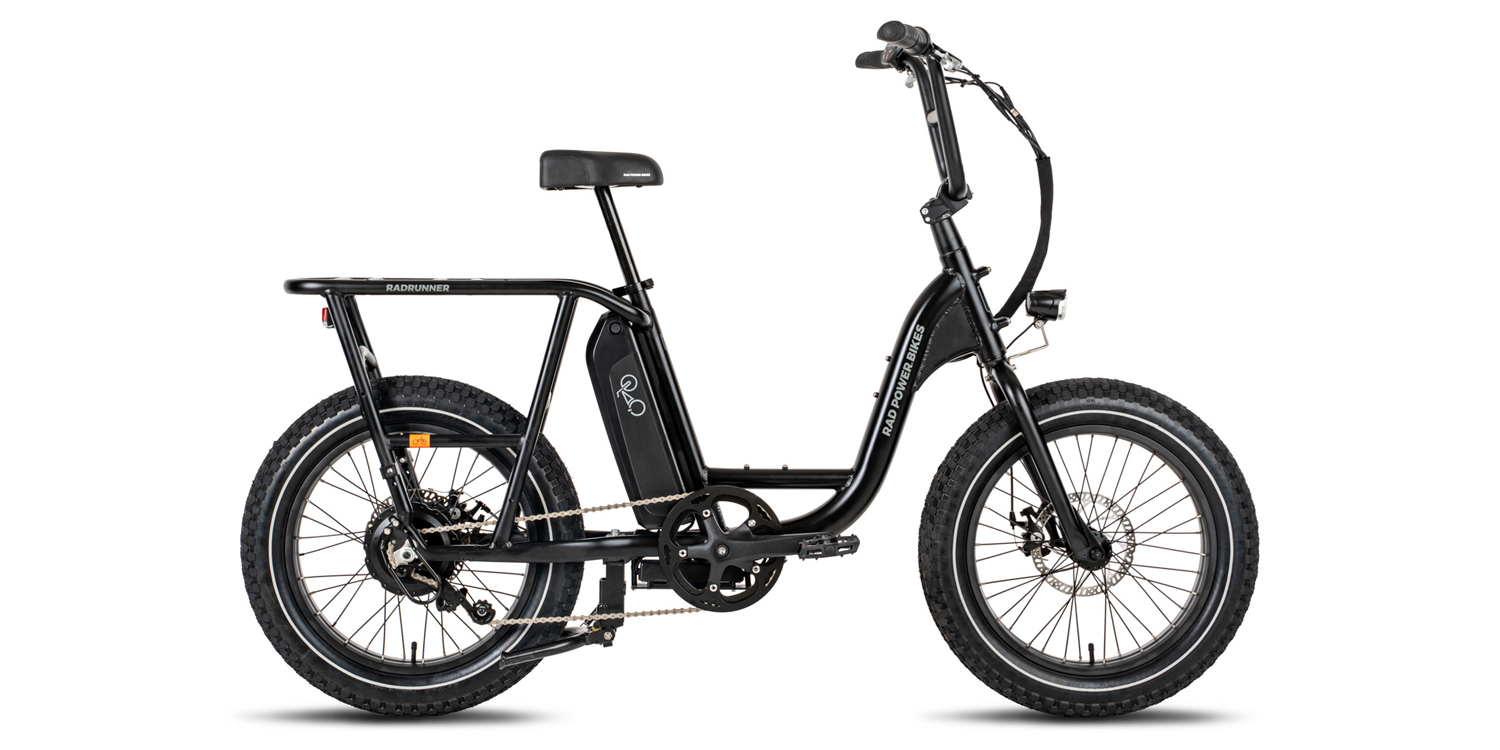
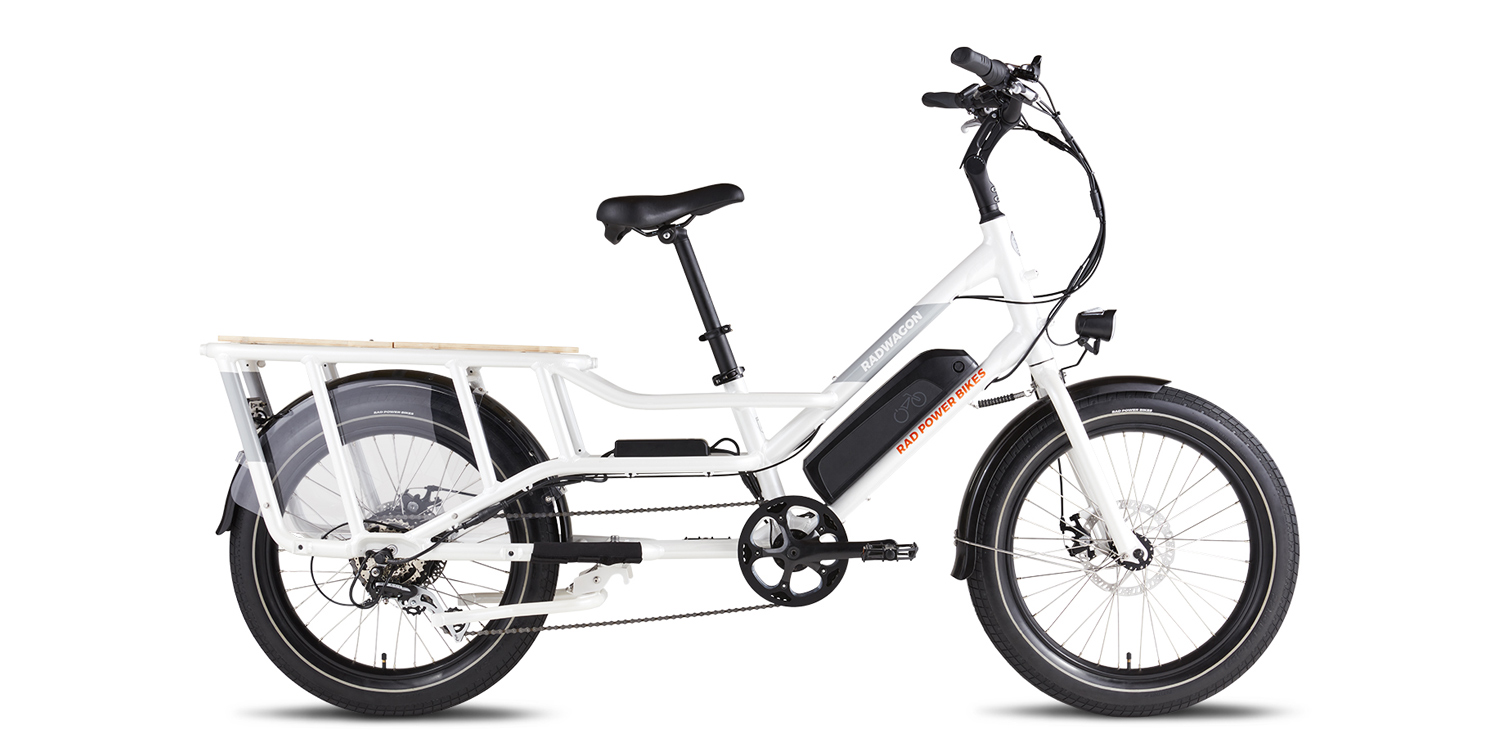
Greg says
Re: The rear derailleur. Shimano Altus derailleurs are excellent. They are produced in vast numbers , used by many brands, and are durable. American custom bike manufacturer Rivendell speaks highly of the Altus rear derailleur.
Court says
Cool, thanks for this input Greg! I have been told similar things by the different bike brands… they suggest that the quality is high on Shimano parts, and the lower end models just weigh more or offer less adjustability but are still reliable. As a reviewer, I’m trying to communicate the differences in components and pricing, because there is a reason that the companies have different levels of hardware. It seems like some of the most ideal choices right now are out of stock, so companies are pivoting to similar hardware and just trying to maintain product availability.
Tim says
The Radcity 4 motor is very quiet. That’s an appeal to me (though I don’t really like the drag when coasting). How does this new motor compare in noise level to the radcity 4?
Court says
Hi Tim! The planetary geared hub motors do tend to produce more noise than gearless direct drive, but Rad is using a higher quality motor here that is quieter than average. If you listen to the ride tests on this video or for the high-step version of the bike here, you can skip to the parts where I’m focusing the camera on the motor and judge for yourself :)
More and more companies have moved to geared because they are lighter, coast more efficiently, and provide more torque at low speeds. The regen feature of gearless hubs was neat, and they did tend to last a long time because there are fewer moving parts inside (just magnets), but the benefits of regenerative braking just didn’t seem to outweigh the costs, especially since it wasn’t very efficient. Perhaps we will see some combination of geared plus regen someday, but then cost could become an issue, since it would be so fancy and require a unique controller and additional sensors.
Ed Shanbacker says
Rad City 5 Step Through or Charge Comfort? Is there a web address where I can find a head to head comparison? What’s your opinion on this choice? I already own the Charge Comfort and am buying a 2nd bike. Is the extra money for the Rad City 5 worth it? Thanks, Ed
Brian Hanks says
I own the Rad City Step-Thru 3 that I use for a daily commuter. With that bike I can “increase” the top speed to 25 miles per hour and to even faster if I change the wheel size to smaller than 26 inches in order to trick the controller into perceiving that I am not going as fast as I am in reality. I like being able to do this as when I am riding down hill – before I made these changes – the experience of riding would be very “jerky” as the motor cut in and out as I approached 25 mph and as I exceeded 25 mph the motor would turn activate regenerative breaking and make going past 25mph into a power lifting session.
My question is, what is possible (or not) with the Rad City Plus Step Thru? Can I increase the max MPH that the motor will help me get up to? I would not have to worry about the regenerative breaking – but I would like a motor that will continue to help me all the way up to 28 mph. Can this bike be configured to do that?
Court says
Hi Brian! Great question. I was not able to figure it out during my reviews, but apparently you can adjust some settings with the display to raise the top speed to something like 25mph. I’m not sure about the wheel size thing though. Here’s a link to the article where they figured it out, and these are the steps:
Hope this helps, please chime in with what you learn and if it works for you :D
Tim says
This works! thanks for the info
John shimkus says
I want one I can tune or change to go 45 mph if anyone can sell me a bike that I can find that instruction to it I will buy one otherwise forget it 20 mph I can buy a moped for 300.00 that does the same thing
Court says
Hi John! There are some high speed ebikes out there, but they kind of skirt the rules being sold as “off road only” which could present a liability if used without turn signals and a moped license. I agree that there are some awesome gas and electric mopeds out there, which are setup as DOT approved. The Rad products, and other Class 1-3 ebikes are meant for bike paths. They tend to be lighter, have pedals, and can be ridden in places that mopeds cannot. Whatever you decide on, it’s great to have so many options these days :)
Julie says
Does the RadCity 5 come in two different sizes? I am 5′ 10″.
Court says
Hi Julie! I think they only make this model in one size, but two styles (step-thru or high-step… and the high-step could be a little larger). I am 5’9″ and thought the RadCity 5 Step-Thru felt great. My inseam is about 30″ and I was able to raise the saddle enough to get full leg extension. I hope this helps :D
Robert l says
I’m 4 foot 10 with an inseam of 25 inches and a reach of 23 inches I weight 100 pounds my concern is, I’ve tried a bunch of e bikes and find I’m only able to touch tippy toes but want to touch flat footed, do you think I can touch flat footed on this bike? RadCity 5 Plus step thru?
Court says
Hi Robert! It’s difficult for me to say for sure, but I feel like this is going to be one of the more approachable ebikes out there. Notice how low the seat tube is, that allows the saddle to get very low as well. The only consideration is the taller wheels. Have you looked at the RadExpand or RadRunner? They are step-thru and have smaller wheels (although larger wider tires). Perhaps you could find one of these bikes for sale used, or visit a shop, or contact Rad customer support and check. With some balance and effort, I think you could make many ebikes work, but starting out with an approachable step-thru frame like these is going to help. In short, YES I do think it could work for you… but I don’t know your balance, strength, age etc. that could all play a role. I hope this helps, and I wish you well with any ebike you might choose. Sincerely.
Abby says
Any thoughts on the rear rack and compatibility with third party accessories? I have not been able to find dimensions of the rack bars listed anywhere, and am looking at panniers with a universal Klick-mount system that fit standard 8mm-16mm racks.